2023 Jeep Wrangler 4xe Rubicon Vs. 2023 Jeep Grand Cherokee 4xe Trailhawk: Which Wheels Better?

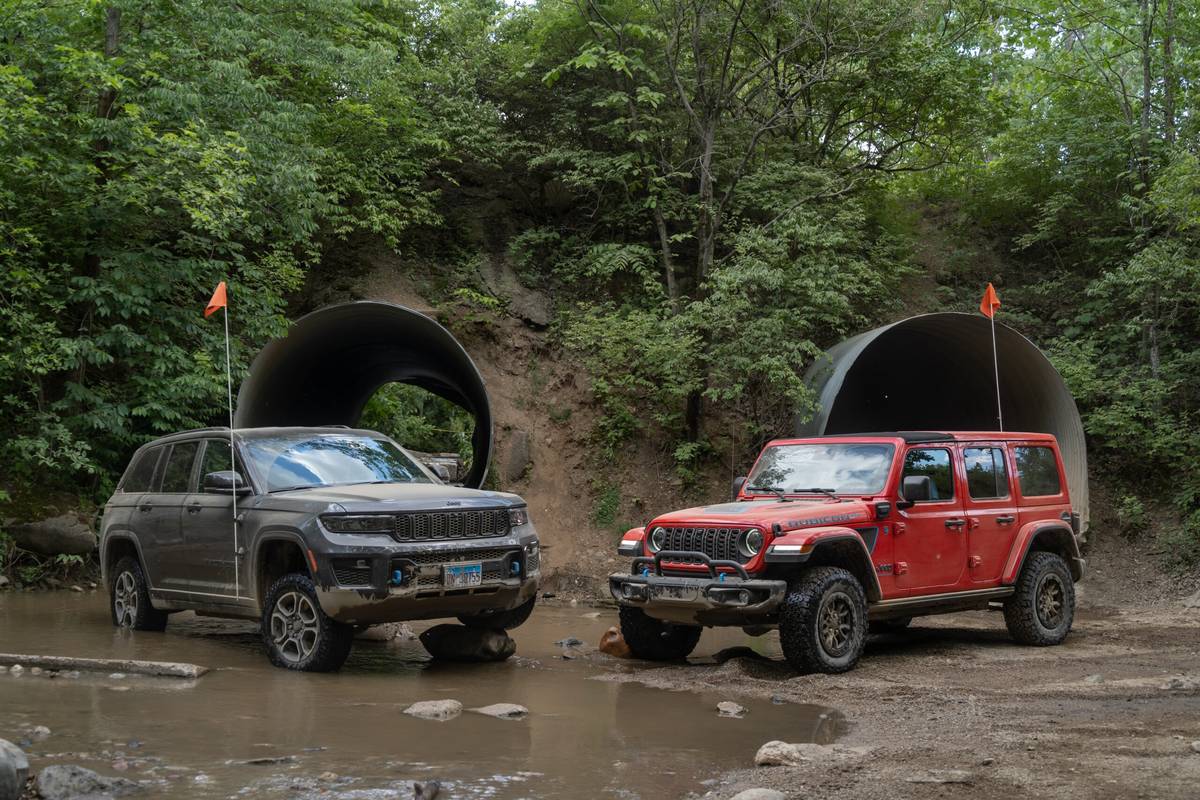
Our Best SUV of 2023 award winner is the 2023 Jeep Grand Cherokee, and we purchased a charcoal-gray Trailhawk version for a long-term test vehicle earlier this year. The Trailhawk trim is the most off-road-ready variant of the Grand Cherokee and for the 2023 model year only comes as a 4xe — which is Jeepspeak for the plug-in hybrid electric model. It features a decently sized lithium-ion battery pack under the seats that enables the Grand Cherokee to travel up to an EPA-estimated 26 miles solely on electric power before the turbocharged gasoline engine kicks on to keep things motoring up to a total range of 470 miles. Part of the reason we wanted to get the 4xe-only Trailhawk trim is to see how well the SUV goes in the dirt and what silent wheeling is like when you’re doing it in all-electric mode. But then we got to thinking …
Related: Why Did We Buy a 2023 Jeep Grand Cherokee 4xe?
Nearly seven years ago, we did a test between the top off-road Grand Cherokee and the top off-road Jeep Wrangler, an Unlimited Rubicon Hard Rock trim. In the intervening time, both models have received some major updates and redesigns, and now that the Grand Cherokee and Wrangler are also available as 4xe models, why not revisit that contest? It’s the newest Battle of the Ultimate Jeeps: a 2023 Grand Cherokee 4xe Trailhawk versus a 2023 Wrangler 4xe Rubicon 20th Anniversary Edition. We took both Jeeps to the Jeep Jamboree in Attica, Ind., at Badlands Off Road Park. At the park, we threw both Jeeps through all kinds of obstacles, up hills, over some wet rocks, and through loose sand and dirt to see which one is a better off-road monster. Here’s how they stacked up.
Related Video:
Our Long-Termer: 2023 Jeep Grand Cherokee 4xe Trailhawk
Our Grand Cherokee 4xe Trailhawk is the top off-road model in the Grand Cherokee line up, and it features a number of upgrades and changes to help it through the dirt. The powertrain combines an electric motor with a turbocharged 2.0-liter four-cylinder engine, an eight-speed automatic transmission and a 17.3-kilowatt-hour battery pack. It delivers 375 system horsepower and 470 pounds-feet of torque, which means that it’s got tons of grunt and is plenty quick in normal driving. Drivers can select either Electric mode, Hybrid mode or eSave mode, which can either run the engine to maintain the current state of charge in the batteries or can be set to actively charge the batteries for later EV-only driving.
The Trailhawk trim also adds equipment to the Grand Cherokee. First is the height-adjustable air suspension, which features two different off-road heights for scaling obstacles or fording streams. The Grand Cherokee has an independent multi-link suspension front and rear with an automatic limited-slip electronic locking rear differential. There’s also the Selec-Terrain traction management system, a fancy way of describing a drive mode selector that will automatically tailor the Grand Cherokee’s various systems to the task before it, whether it be rocks, mud and sand, or just highway cruising. There are additional underbody skid plates and protectors, blue tow hooks, special wheels with all-terrain tires and a unique interior color scheme, as well, which help differentiate the Trailhawk from other Grand Cherokee 4xes and make it more battle-ready out in the wilderness. Price as tested: $73,225 (all prices include destination). Yikes — the as-tested price for the (not-yet-PHEV) 2017 model in our last comparison test was $50,125.
The Challenger: 2023 Jeep Wrangler 4xe Rubicon 20th Anniversary Edition
As for the Wrangler, it’s also the top off-road trim there. The Rubicon trim is where Jeep amps everything up to its maximum potential for scaling cliffs out in the rough. As for the powertrain, it’s exactly the same as the Grand Cherokee 4xe and even makes the same power and torque. The big difference is range: The Wrangler only delivers 21 miles of all-electric range, mostly because of its much worse aerodynamic efficiency. Unlike the Grand Cherokee (or the Ford Bronco), the Wrangler uses two live axles: Dana 44 units front and rear, with electronic driver-selectable locking differentials and a front sway-bar disconnect feature. While the Grand Cherokee uses a selectable part-time two-speed transfer case, the Wrangler Rubicon features a Rock-Trac NV241 full-time transfer case with a 4:1 low-range gear ratio. The 20th Anniversary also brings in a few functional extras, such as 33-inch BF Goodrich All-Terrain KO2 tires wrapping 17-inch beadlock-capable wheels, steel bumpers, heavy-duty steel rock sliders and an integrated front off-road camera, as well as special-edition badging, stickers and a unique leather interior. Price as tested: $80,645. Holy crap … the last head-to-head had the 2017 Wrangler Unlimited Rubicon Hard Rock at just $48,120. That’s one hell of a price increase over six model years.
Here’s how the two of them compare in various categories.
Styling and Powertrain
Both the Wrangler and Grand Cherokee now have iconic looks, and it’s totally a matter of personal preference which one you like better. Nothing else looks like a Wrangler, but the Grand Cherokee has also managed to keep its familial looks without morphing into an amoebic blob like so many other SUVs. I will give a nod to the Wrangler’s snap-together-style construction, however; its ability to drop its top, doors and windshield puts it in a different league and has for a very long time.
As for the powertrain, again, they’re identical, but the Grand Cherokee has a slight advantage in all-electric range. This is especially interesting knowing that the Grand Cherokee manages to get better electric range while being a few hundred pounds heavier than the Wrangler. It just goes to show you how much more important aerodynamic efficiency is to overall range numbers than actual weight. Given that the Wrangler is styled like the box it came in and has all manner of things jutting out from it to increase its drag, the slick, smooth Grand Cherokee wins the aero fight.
On-Road Manners (Mall-Rated)
There’s really no contest here: The Grand Cherokee is a luxury SUV, especially when compared to the Wrangler in Rubicon trim. Despite the Grand Cherokee’s tall-sidewall, knobby-treaded off-road tires, which contribute to some louder-than-normal tire roar and squishier-feeling handling manners on pavement, it is smooth, quiet and far more composed than the Wrangler on the street. Despite improvements to the Wrangler’s ride and handling over the years, it’s still a sailboat in a strong crosswind, blowing all over the highway, requiring constant attention and adjustment. Blame the two solid axles; it’s the only vehicle on the market short of a commercial-duty pickup that continues to sport such a setup. Even the current Bronco has a front independent suspension, while the Wrangler soldiers on with the tried and true method that emphasizes its off-road abilities over on-road comforts.
That said, this Wrangler Rubicon does behave on-road far better than prior-generation versions I’ve driven. The tires may be off-road KO2s, but their copious sidewall and softer tread make for a decently comfortable ride quality, at least. The Wrangler absorbs potholes and bumps with ease, as it’s meant for much more challenging terrain than anything you’ll find on an interstate highway. Still, if you’re looking for a civilized driving experience? Pick the Grand Cherokee. Want to experience what it’s like to drive a brand-new vintage car? That’s the Wrangler.
Off-Road Manners (Trail-Rated)

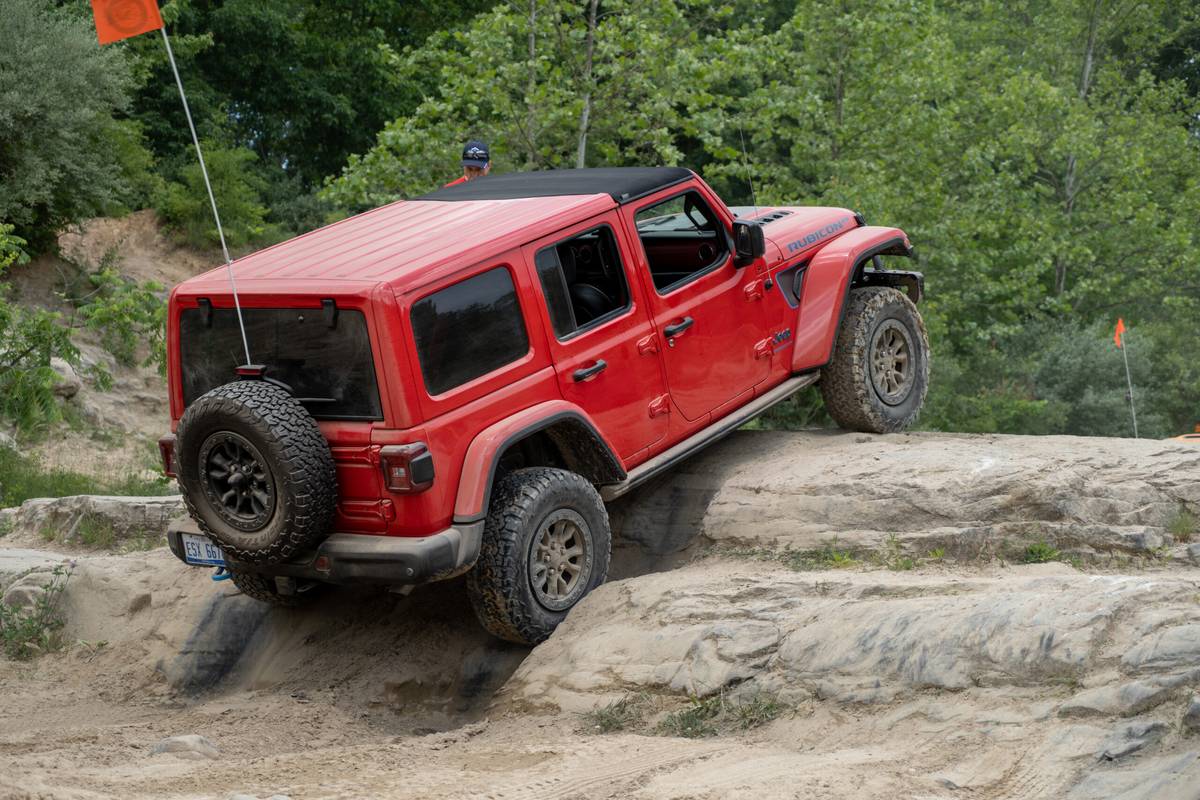

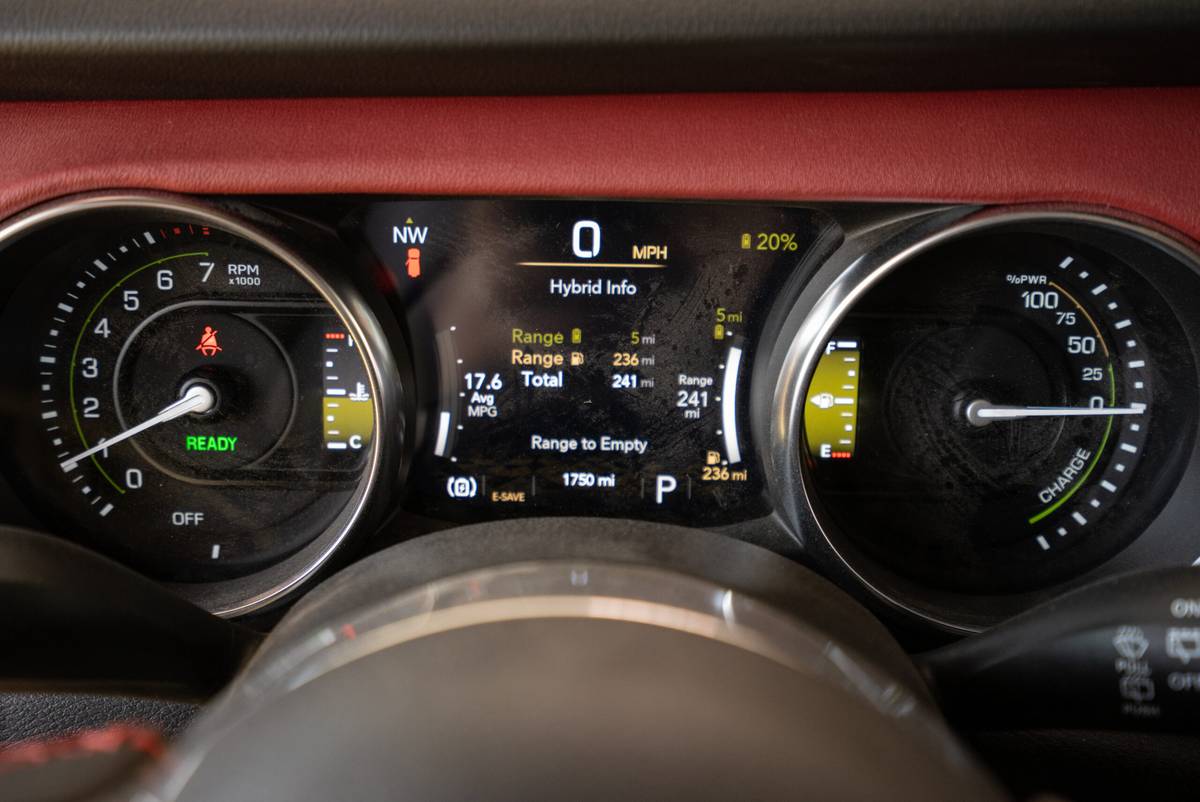
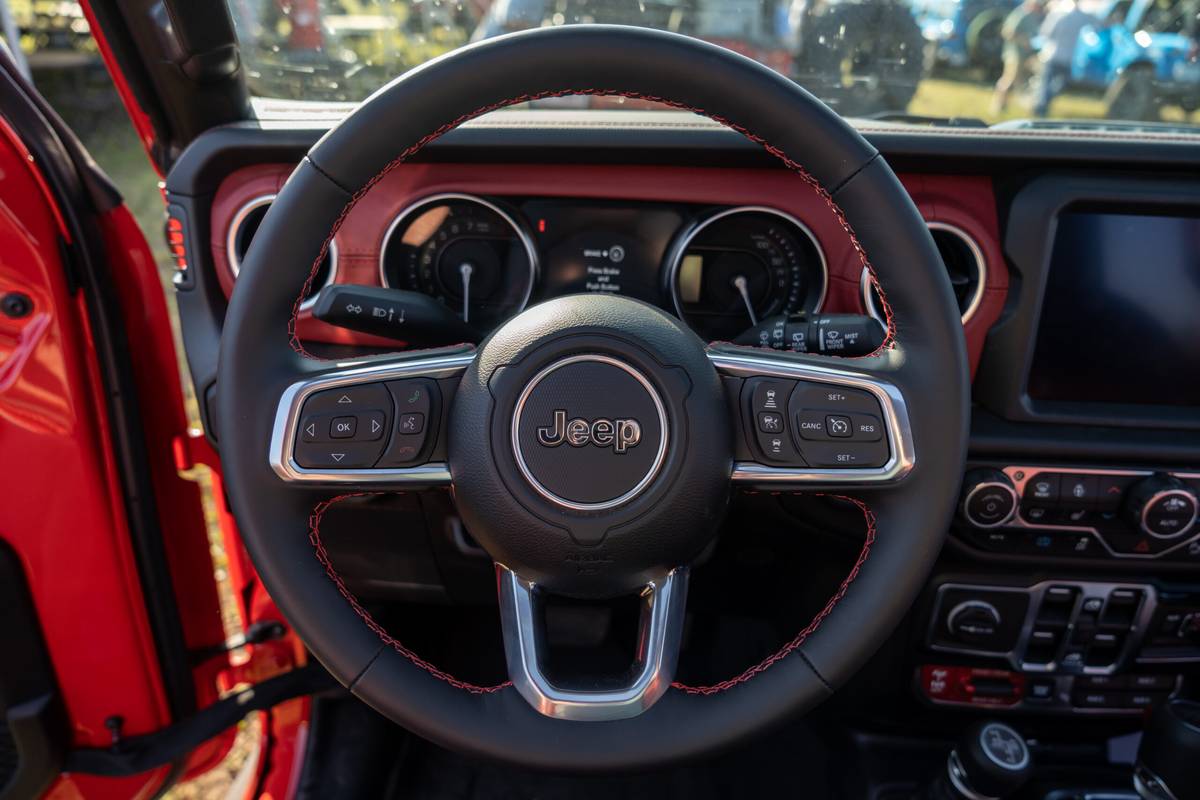
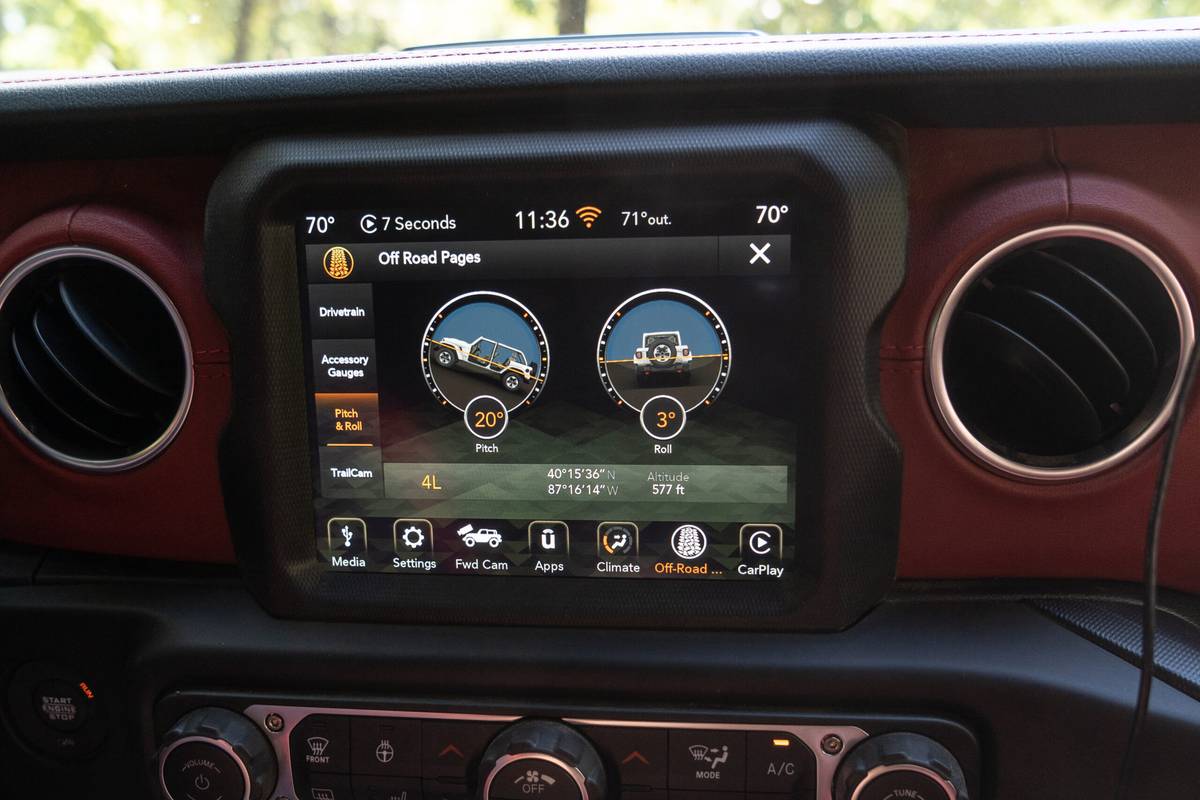
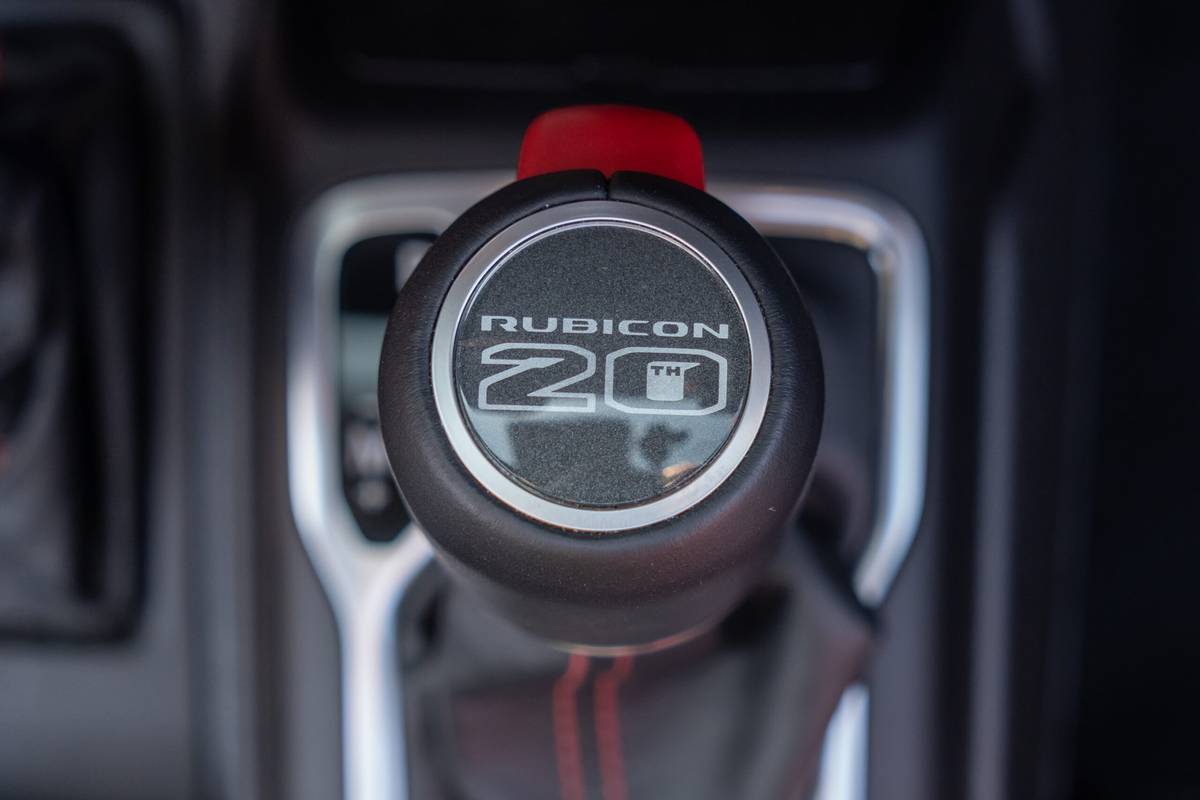


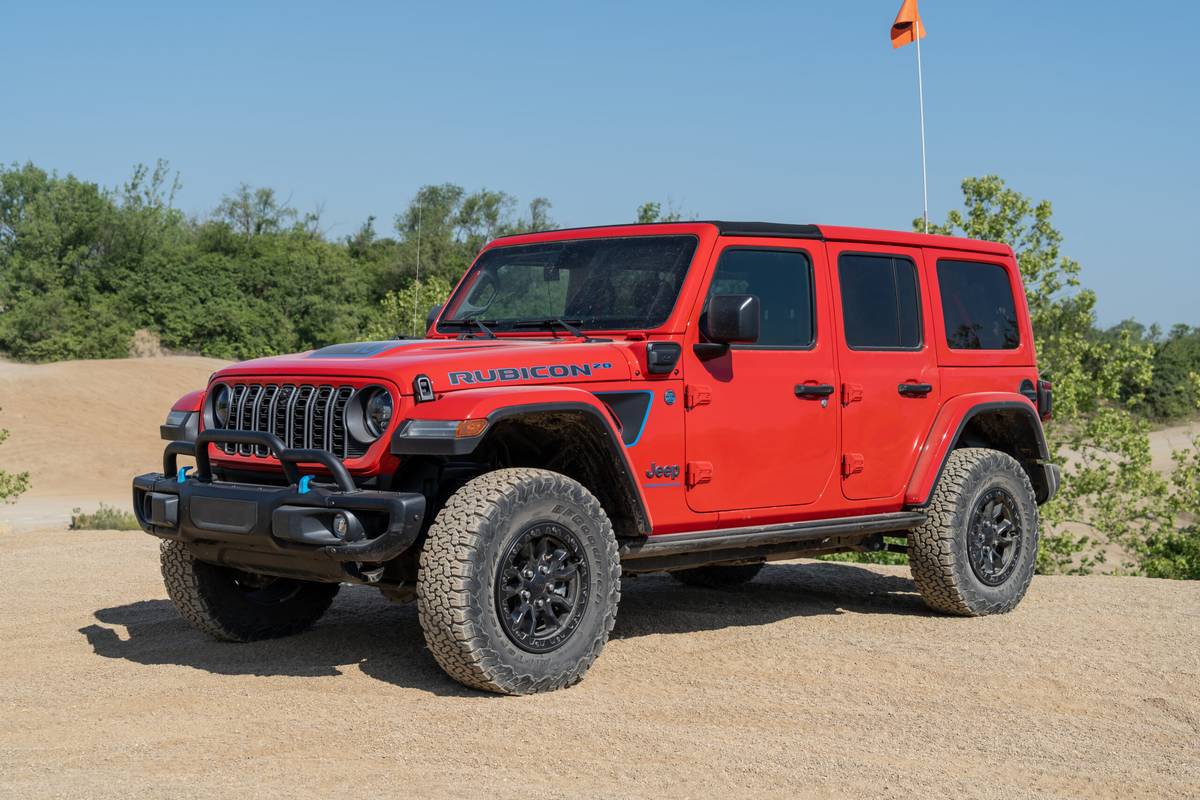
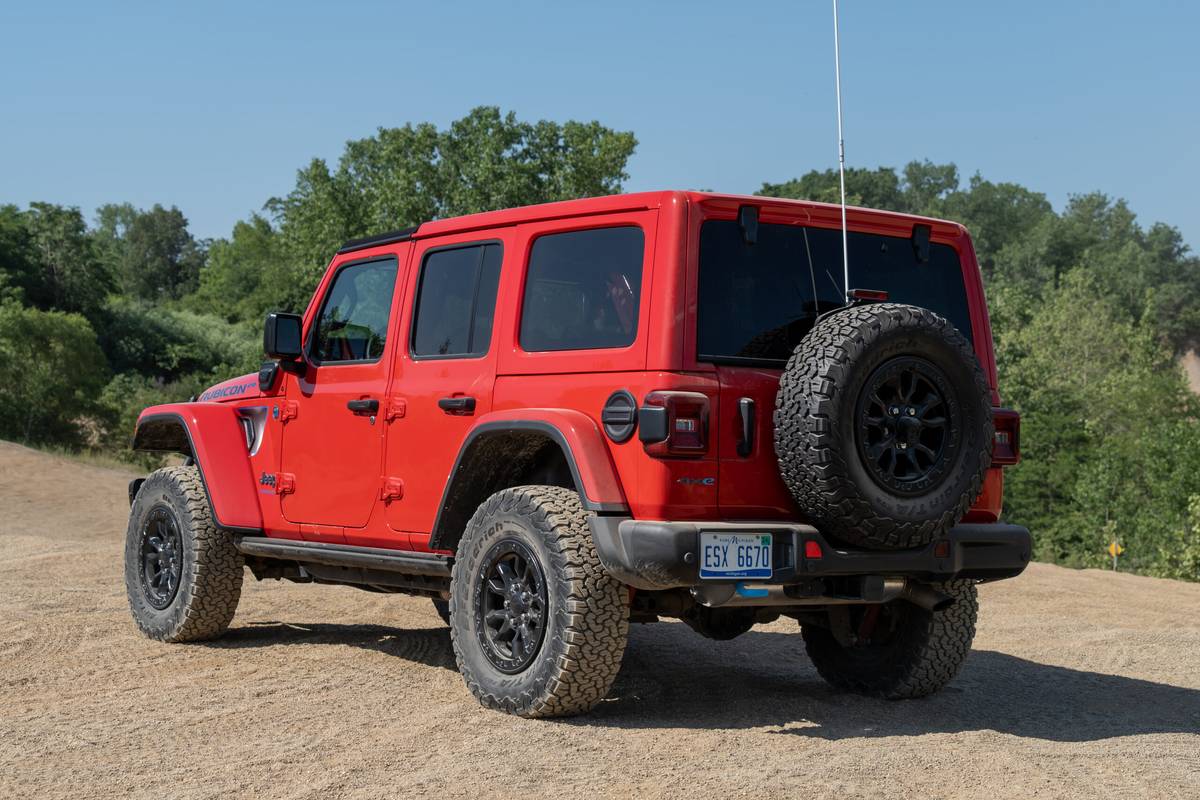

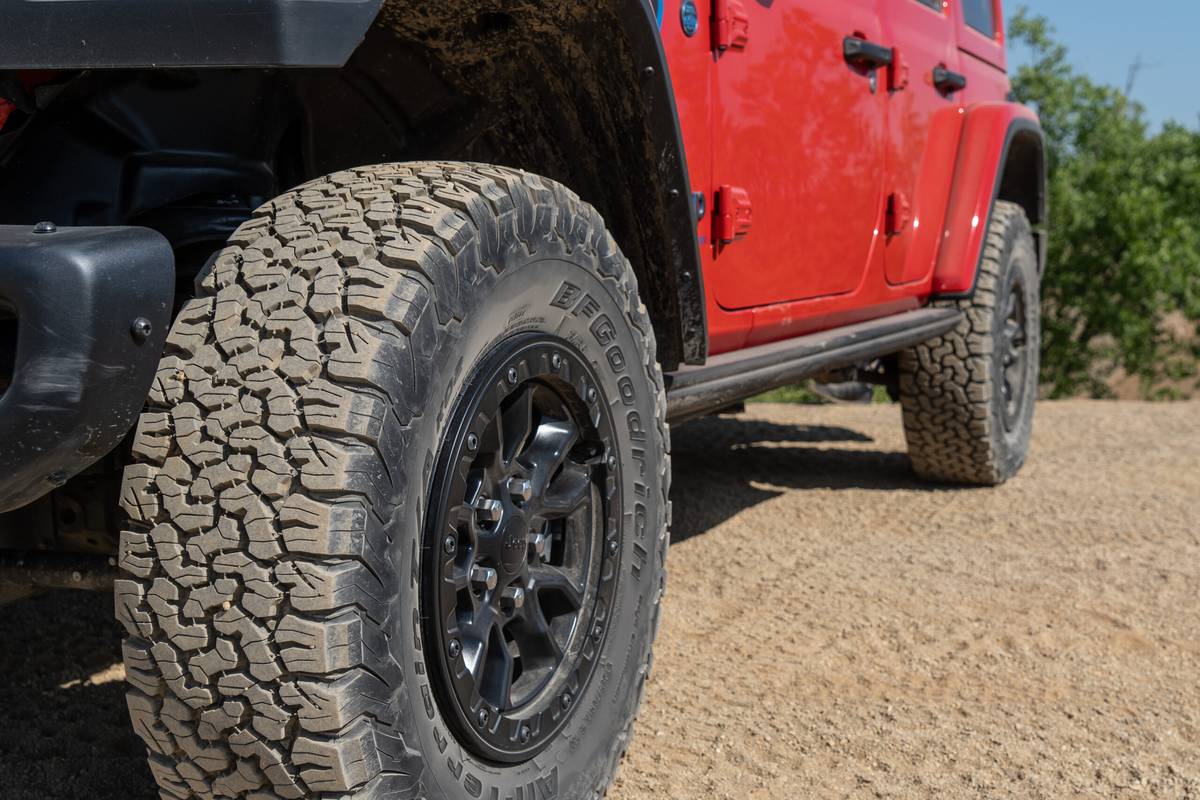

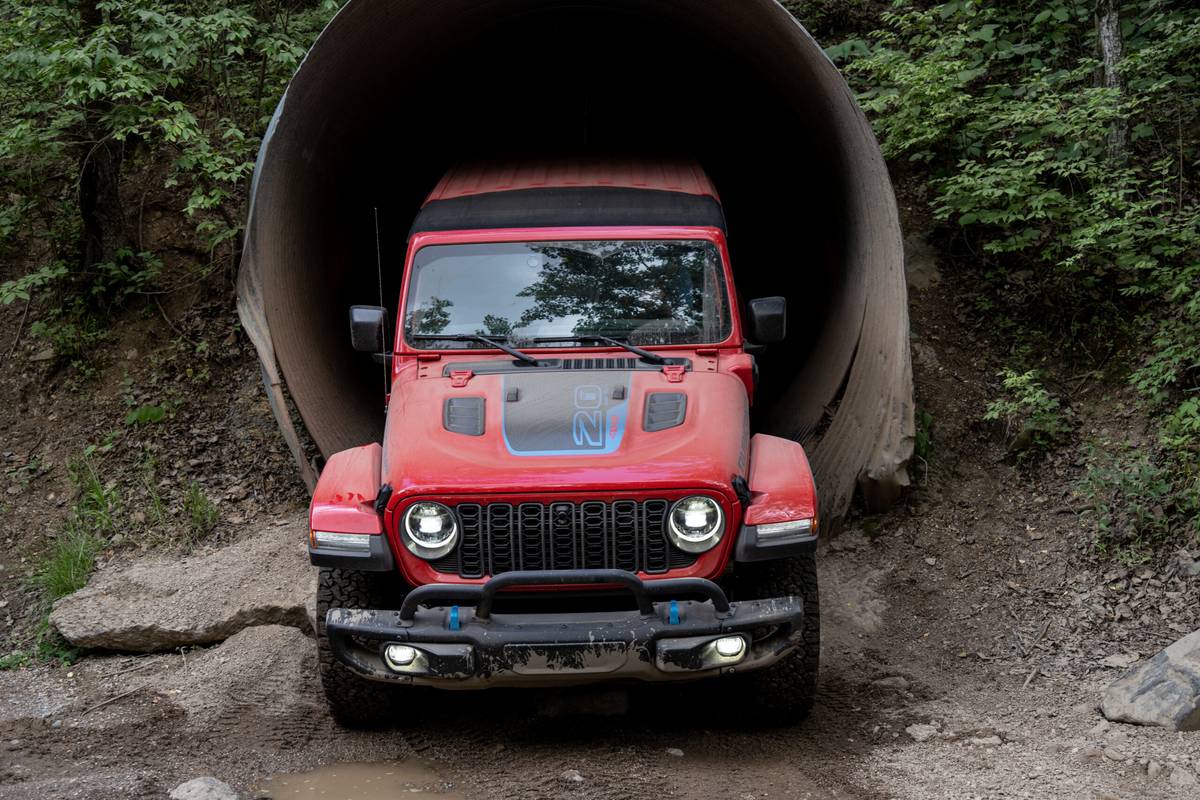
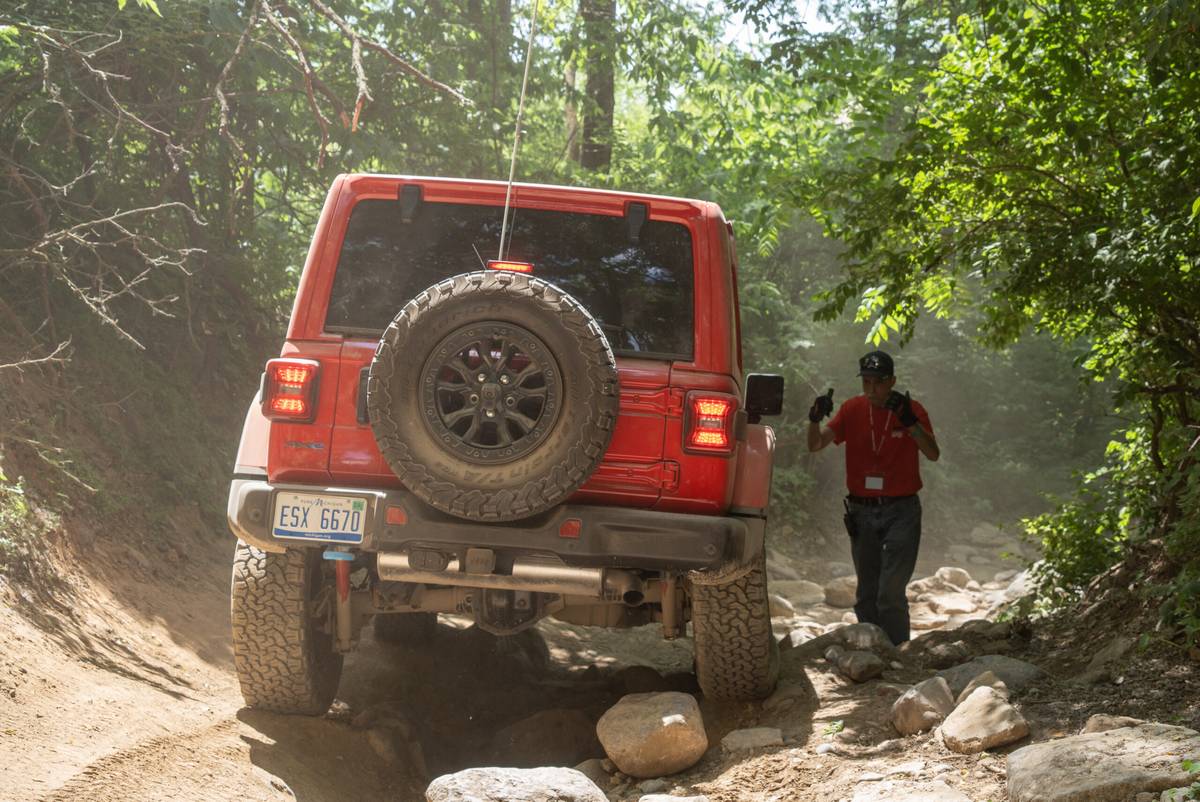
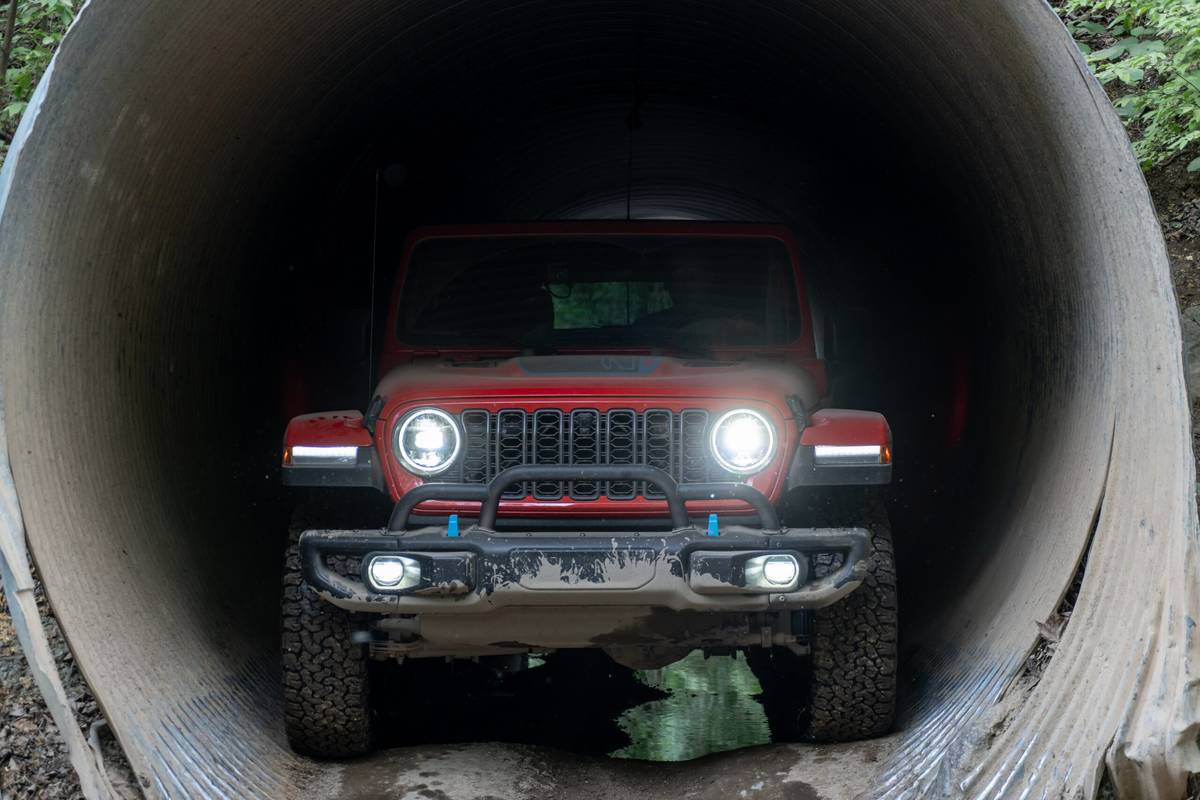
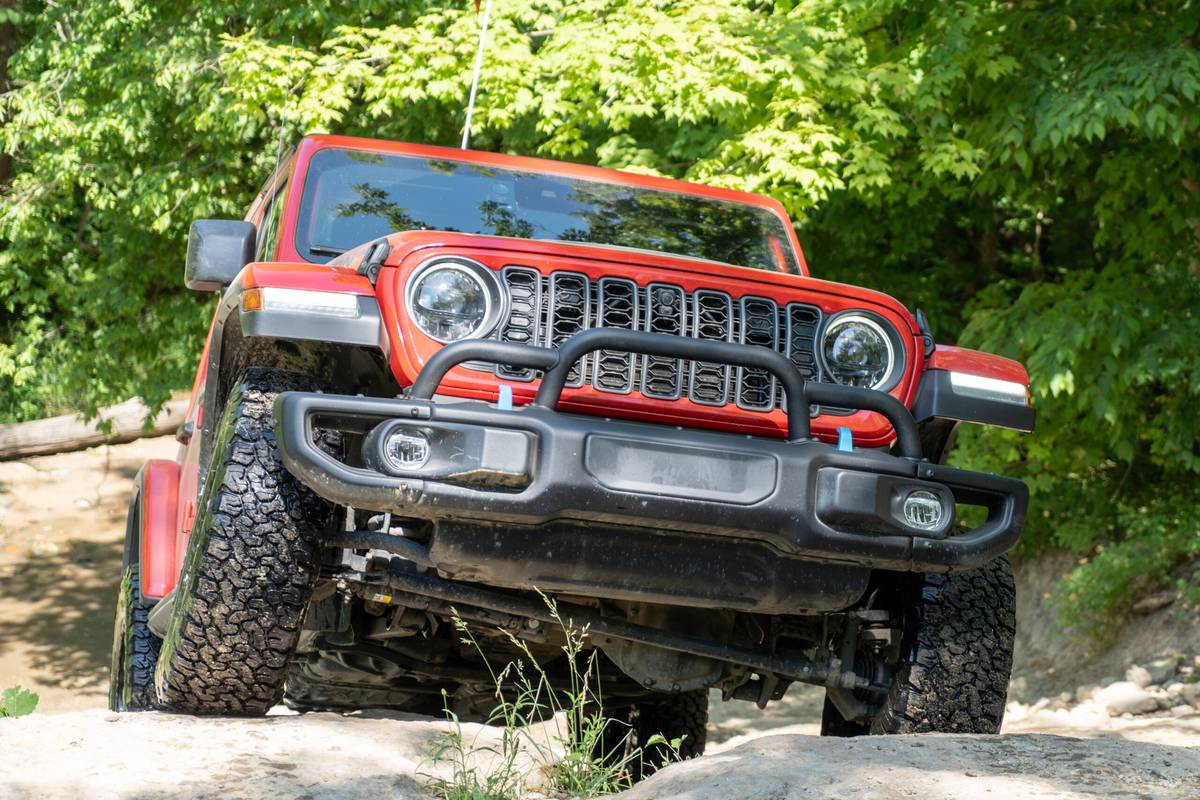
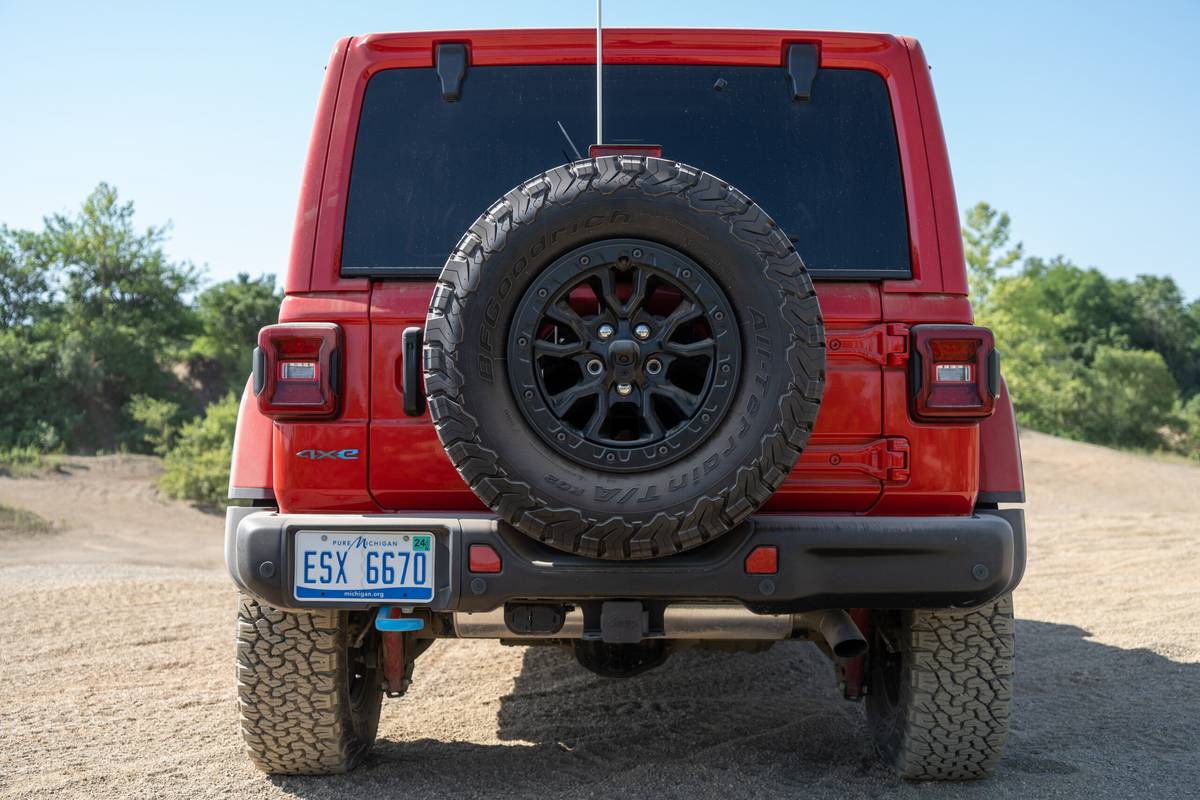
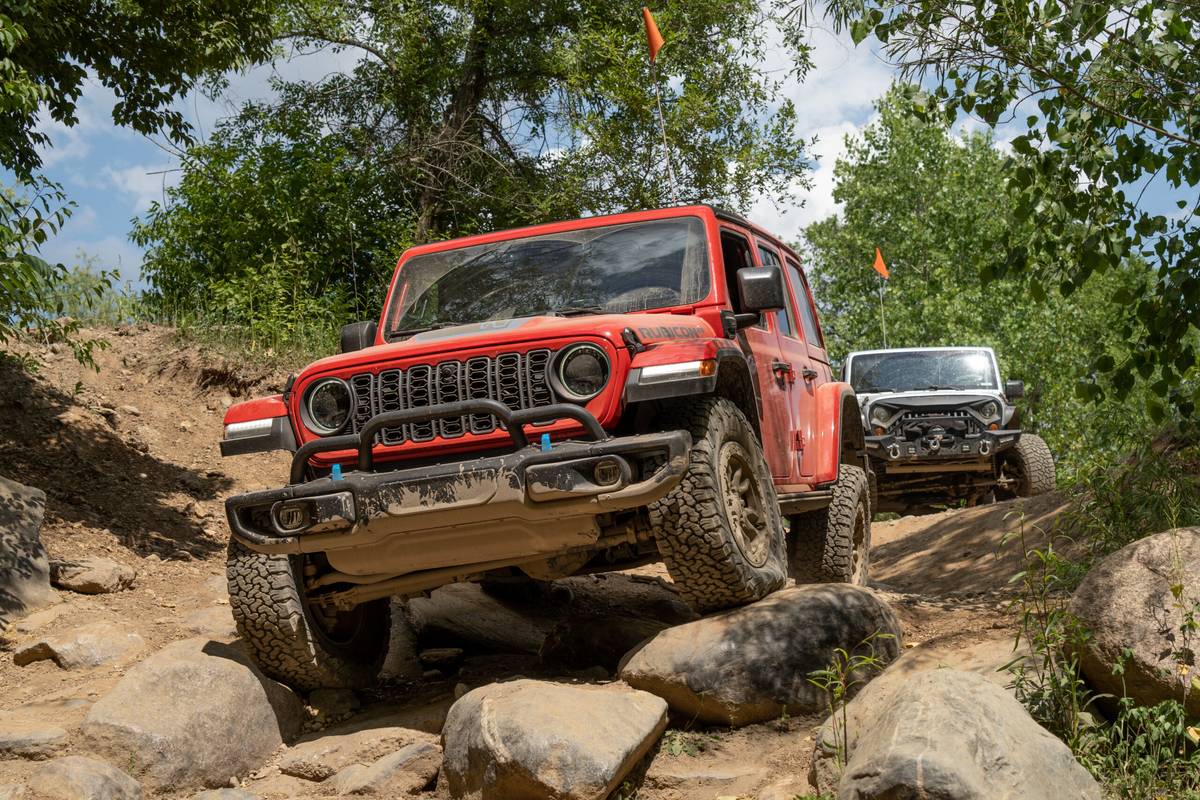

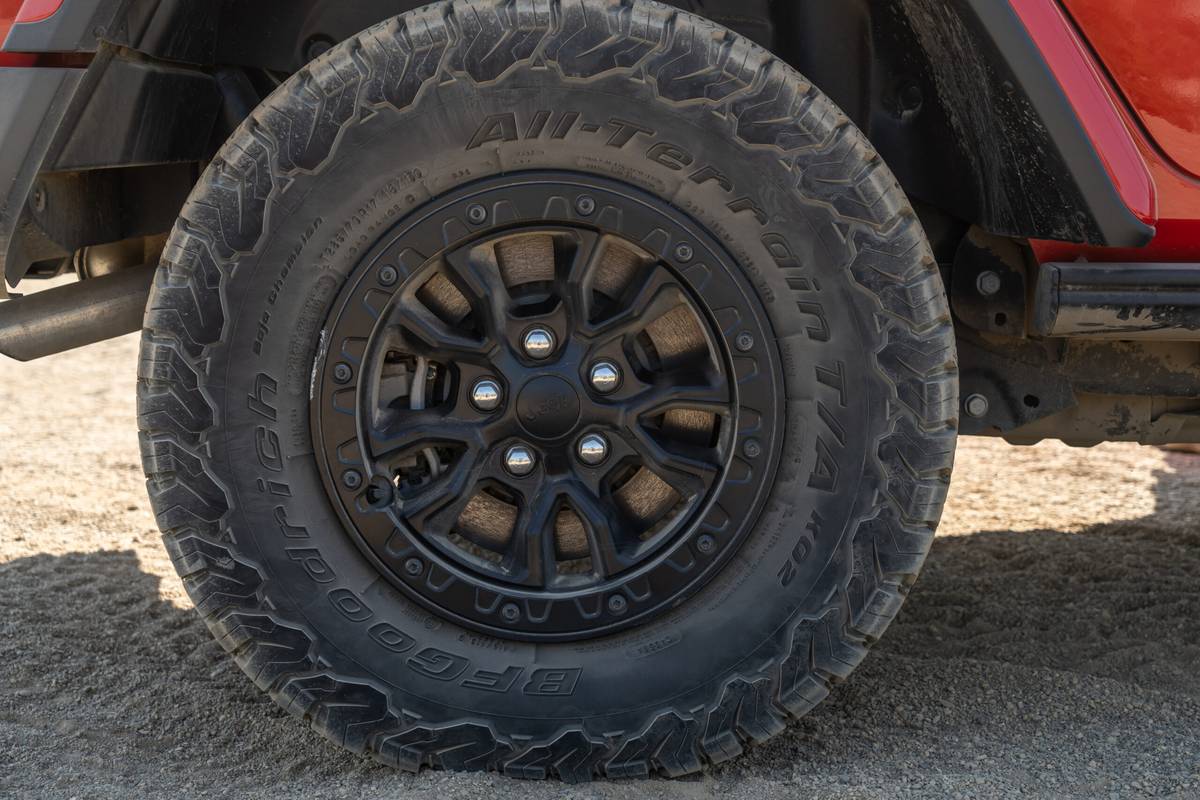
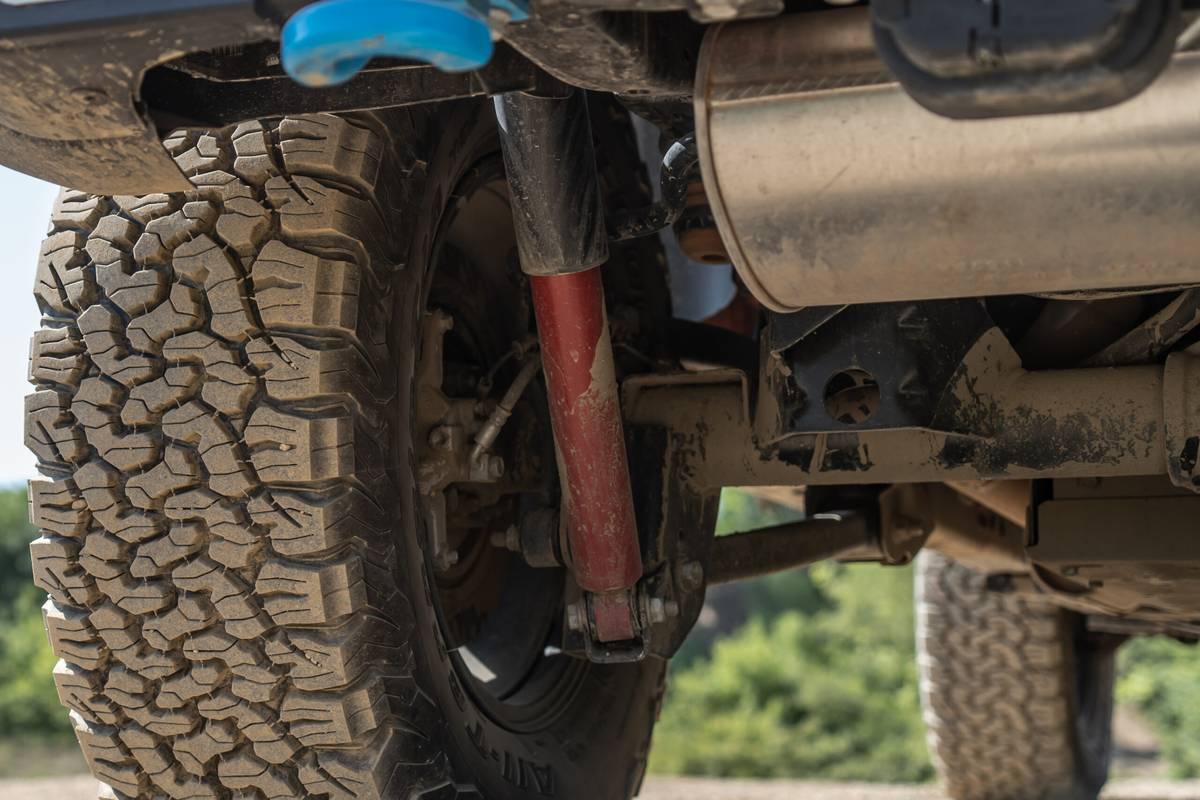
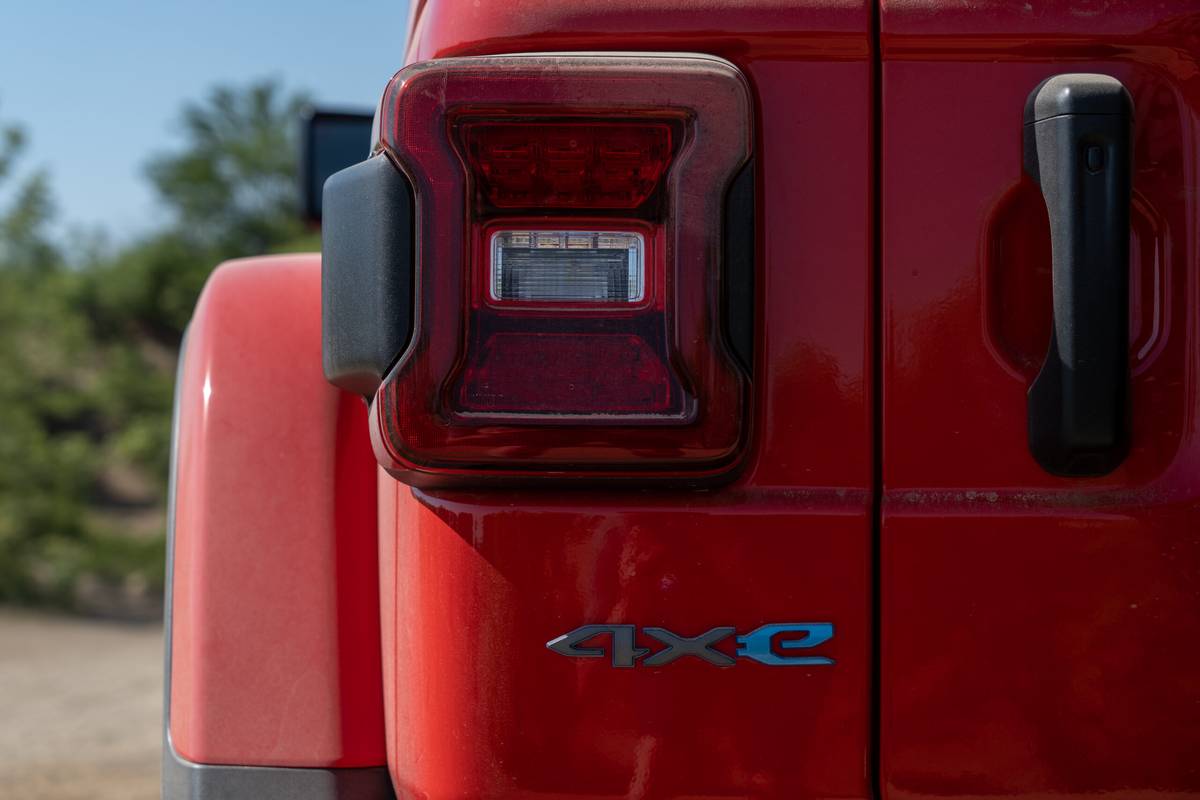
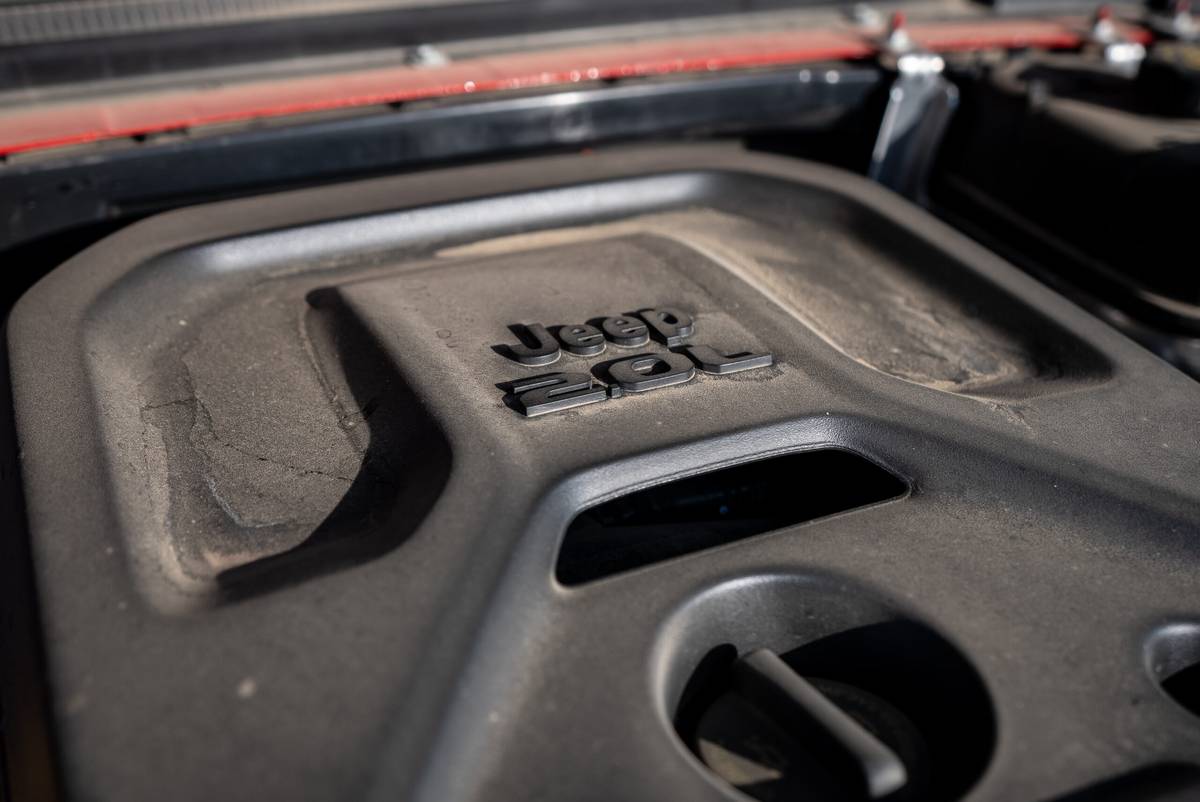
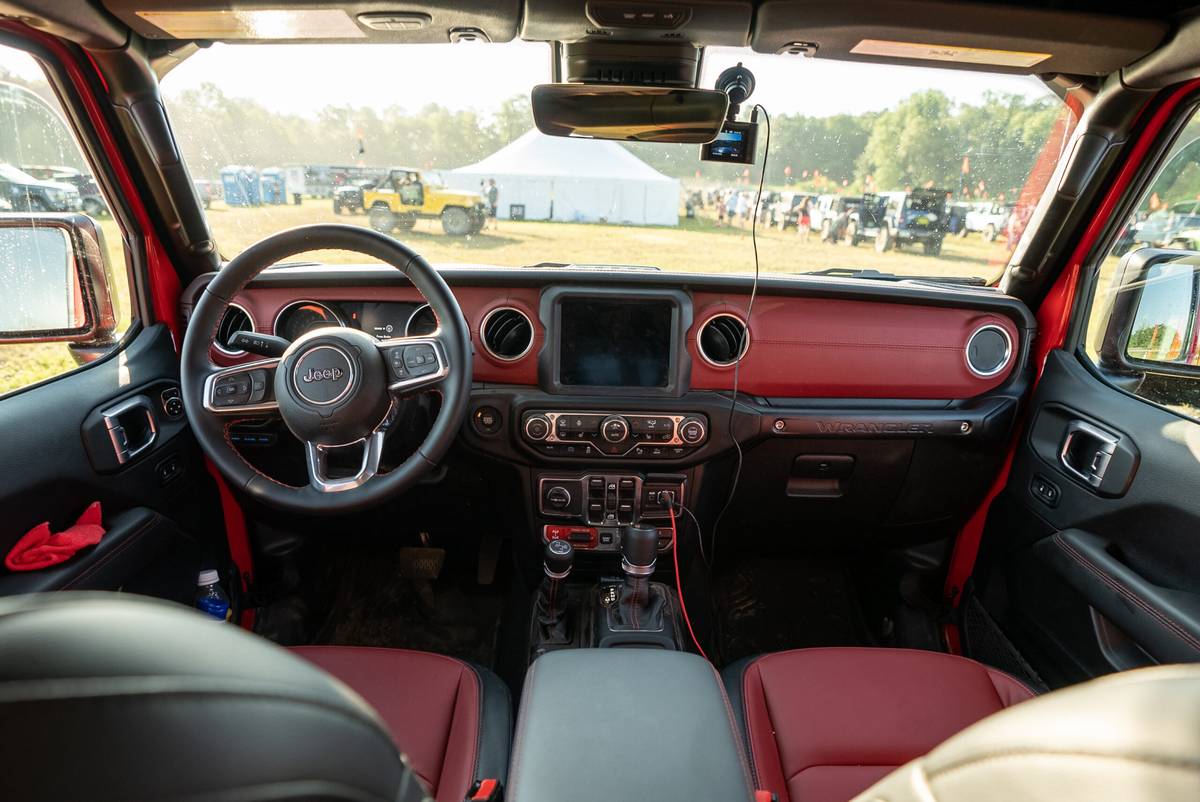
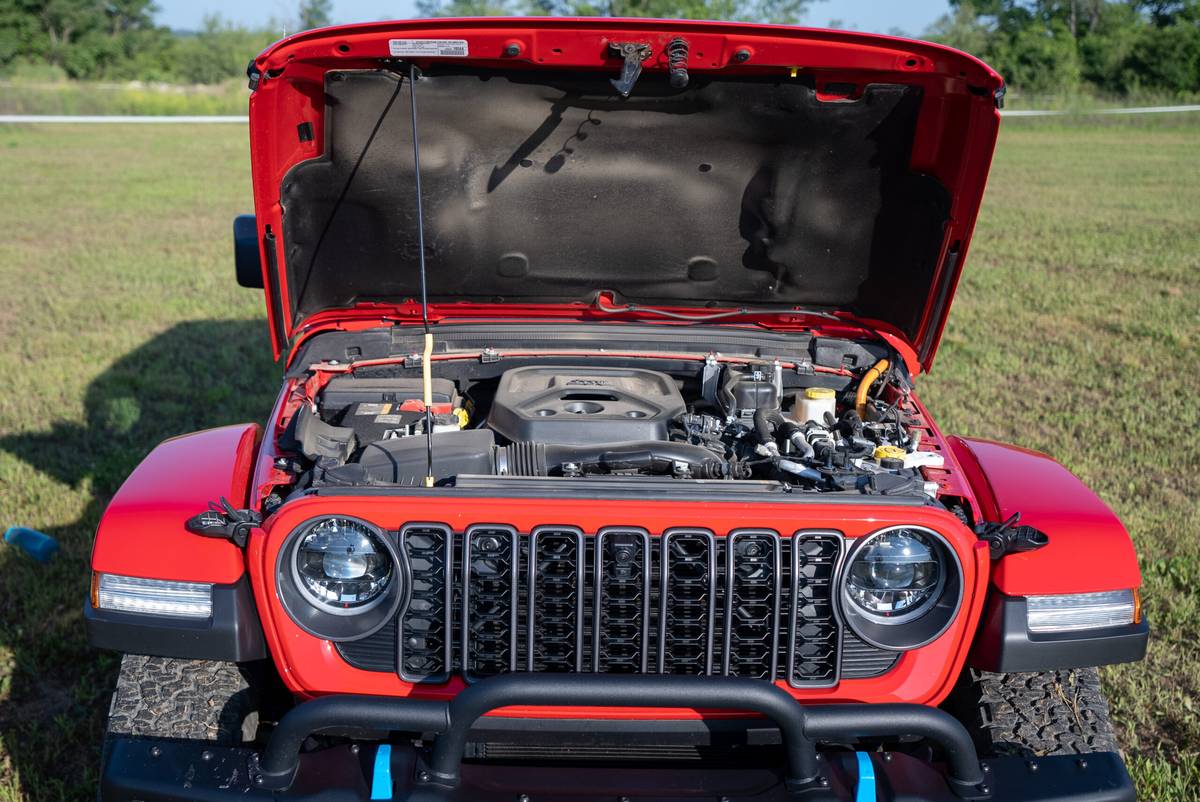
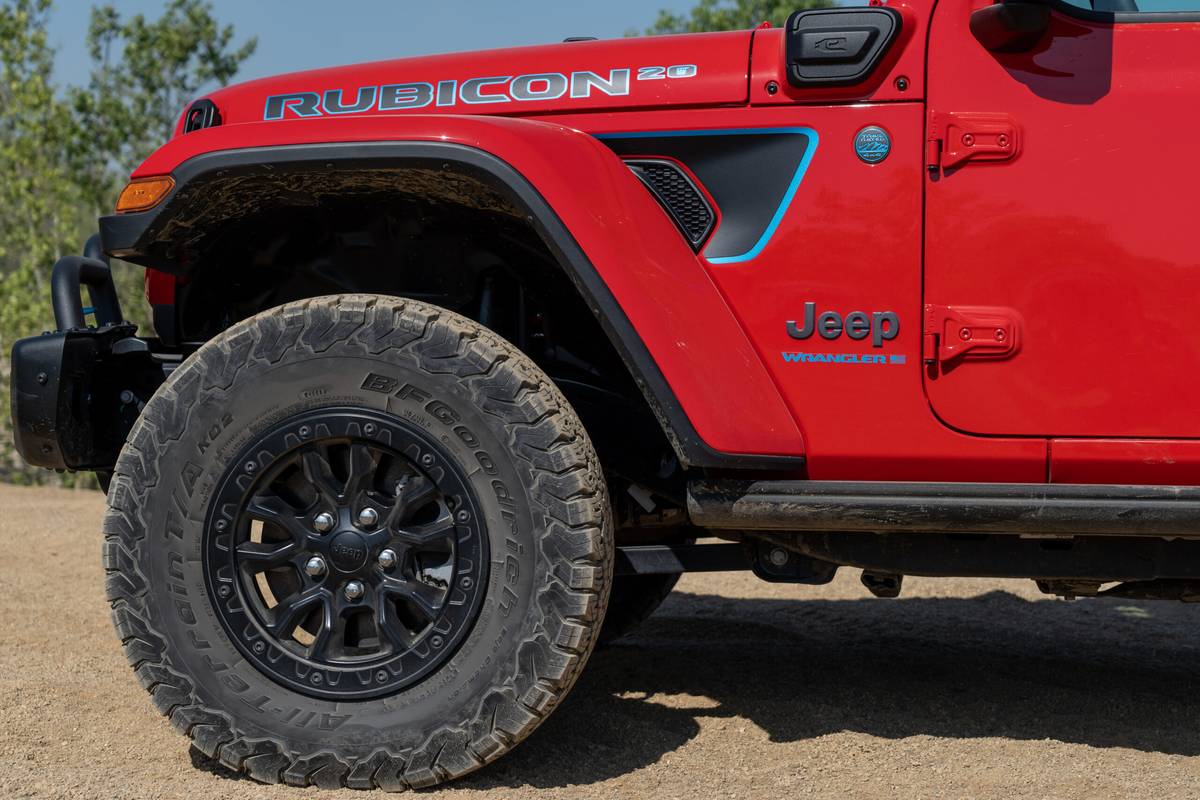
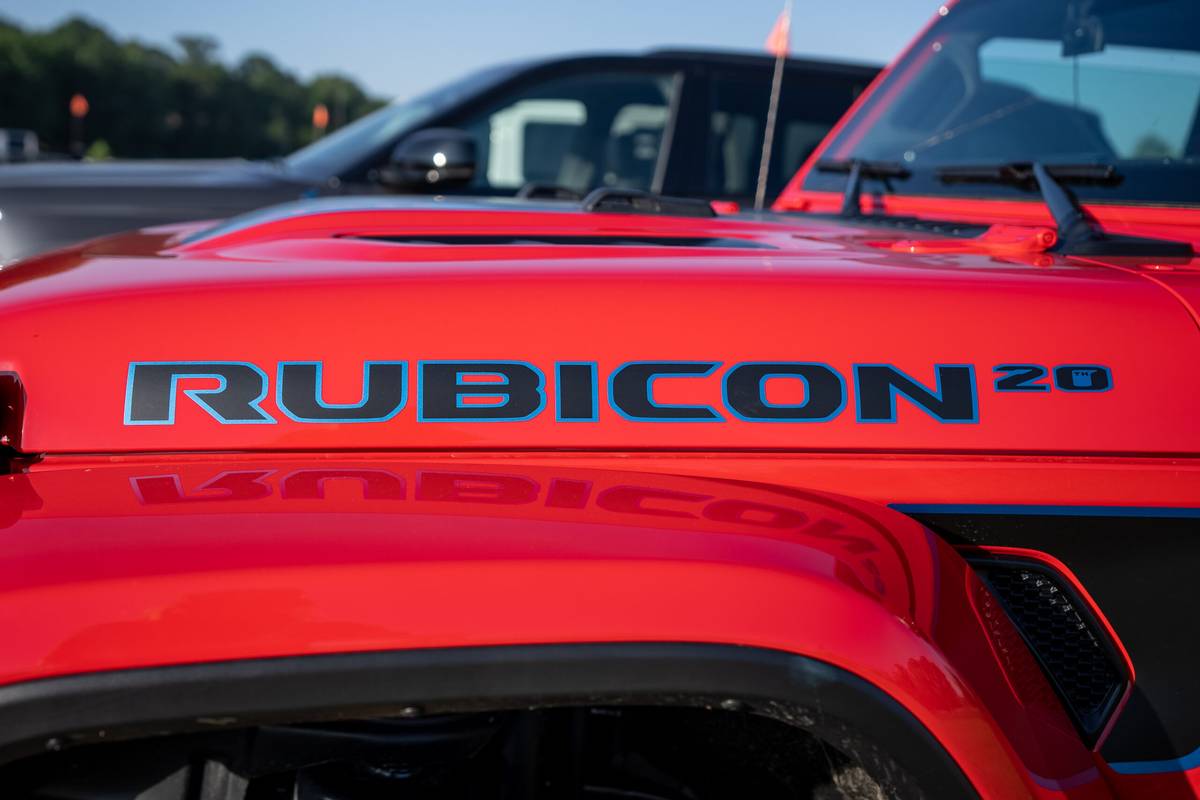
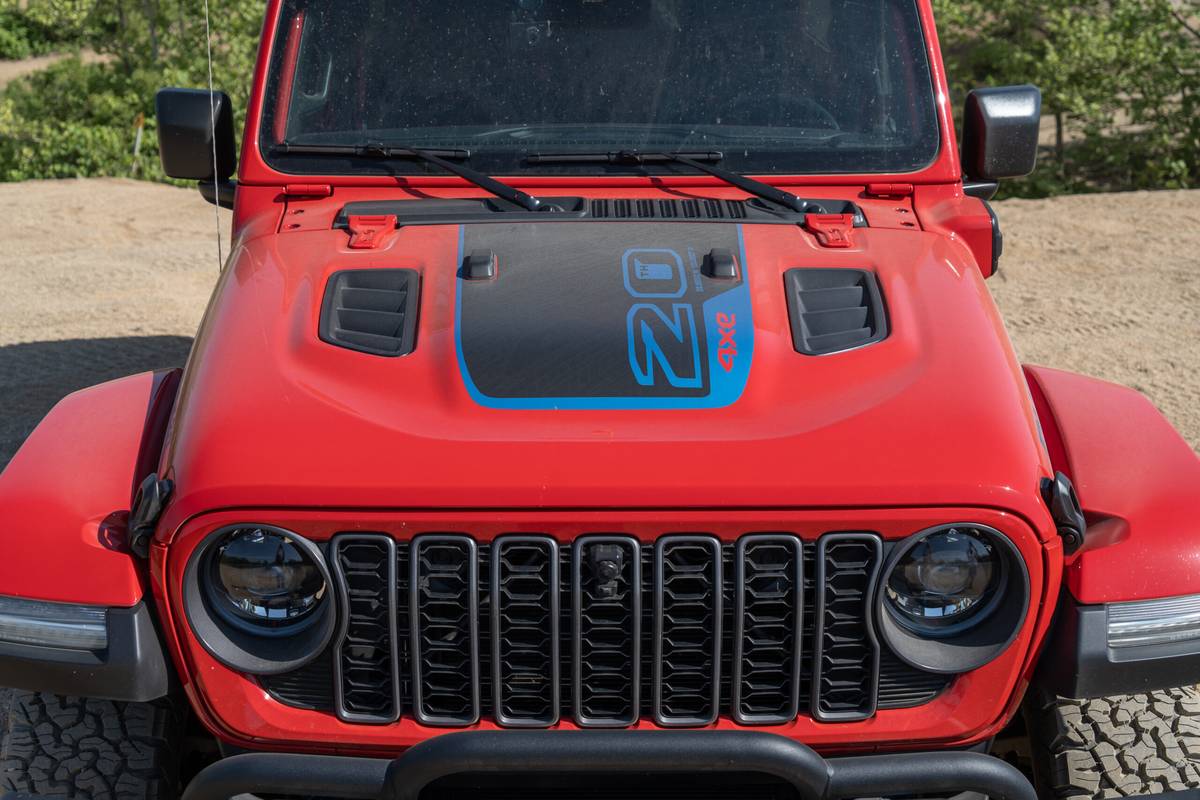

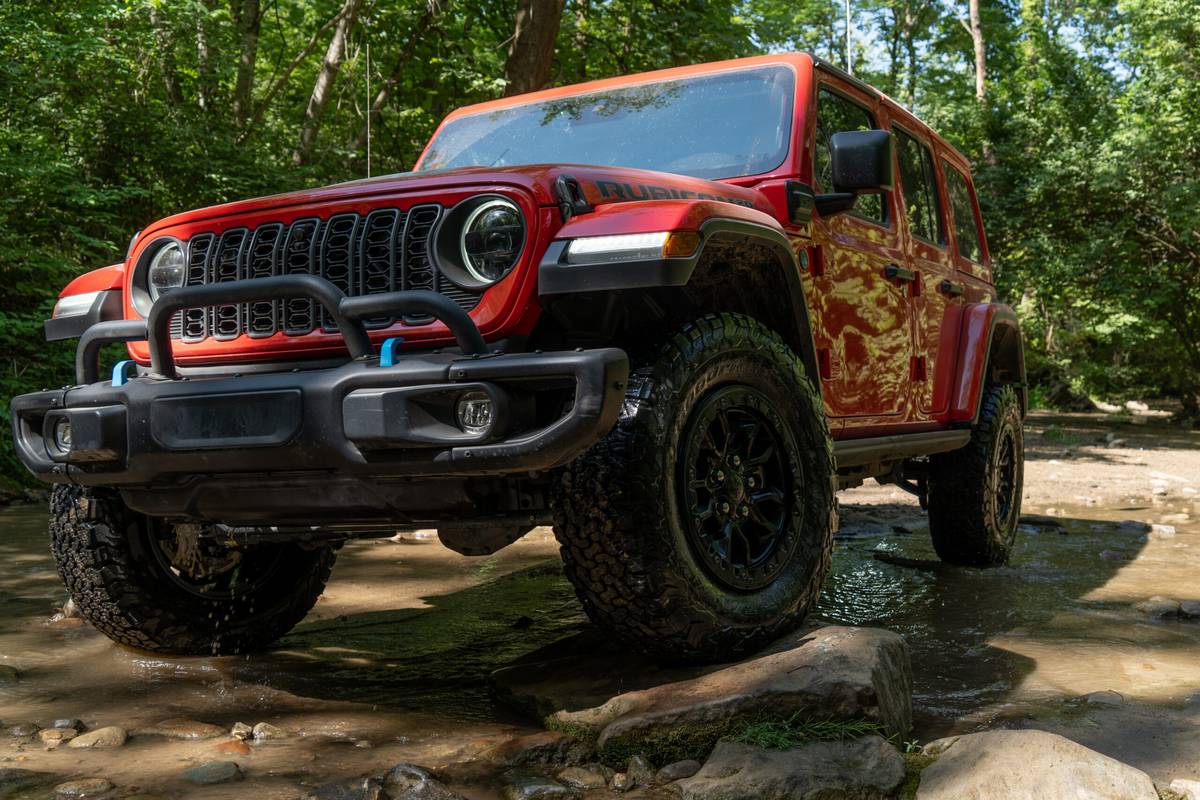
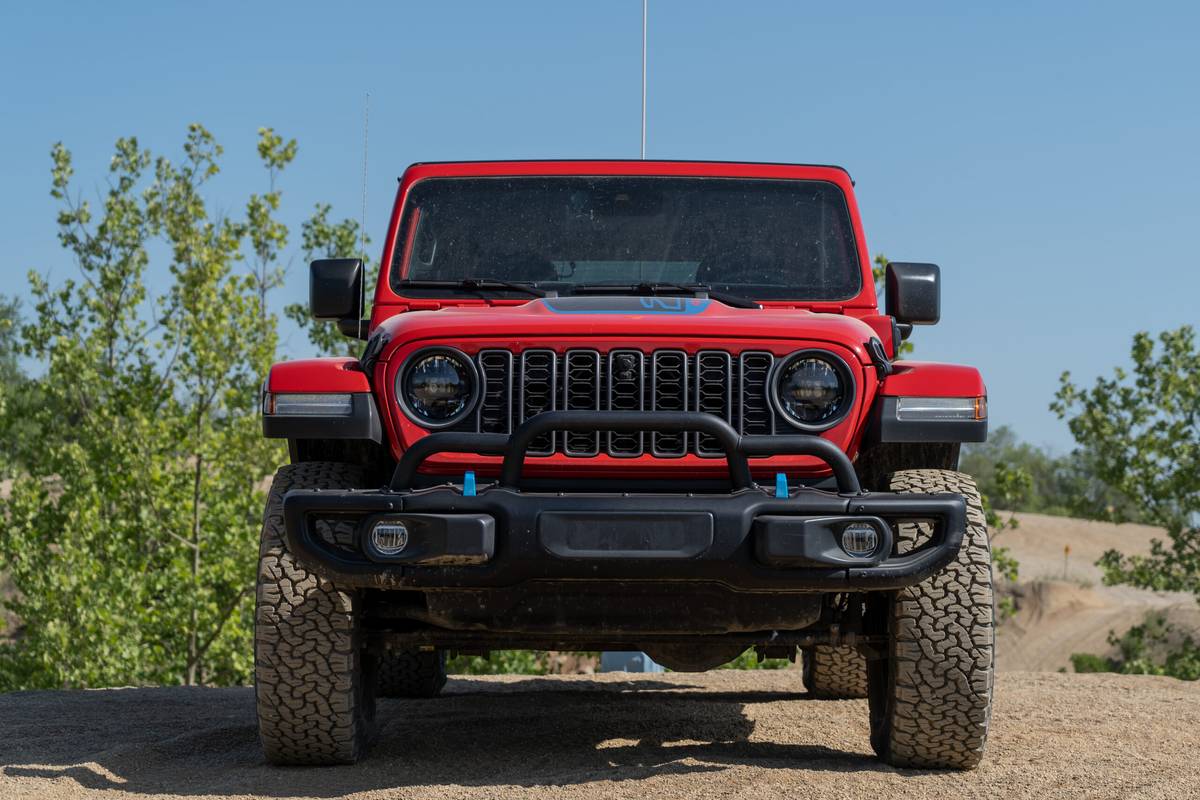

































Here’s where things get interesting. Both of these Jeeps come equipped with state-of-the-art off-road technology designed to get you over some astonishingly difficult obstacles. Take either one out in the rough with some experienced trail guides (like those running any Jeep Jamboree), and you’ll be stunned at the things either of these off-roaders can do. They go about their mission quite differently, however.
I’ve likened the comparison between the Grand Cherokee and Wrangler to that of coffee machines. The Wrangler is a fancy espresso machine that requires you to know what buttons to push, what levers to pull and what settings to use in order to achieve your desired goal of an amazing cup of coffee, or the off-road equivalent — scaling tall cliffs, diving through deep sand or fording a deep, slippery stream. You have to know when to engage low range, when to disconnect the sway bars or lock the front and rear axles, and how to apply throttle and brake. It’s a machine that requires skill and knowledge but, if you get it right, it’s immensely satisfying to use.
The Grand Cherokee, on the other hand, is one of those all-in-one, fire-and-forget coffee machines in which you put in all the ingredients, push a button or two, and out pops a steaming hot latte with foamed milk and a dusting of artwork on top. You simply tell it where you are (Rock, Mud/Sand, Snow, etc.) using its Selec-Terrain controller, and it does things for you like engage low range, activate the electronic limited-slip differential, change the throttle mapping and inputs, raise the suspension and more. Skill and knowledge is not as necessary; you just have to tell the Grand Cherokee what you want to do.
That said, one of these vehicles can do more, go further, scale greater obstacles and do so without risk of destroying bits and pieces of itself — and that’s the Wrangler. It shirked from no task we set before it, from slick rock climbs to some incredibly steep descents. The Grand Cherokee also amazed us with what it can do, but we came upon its limits more readily. Its approach angle isn’t as good as the Wrangler’s, meaning it couldn’t quite get up all the same obstacles the Wrangler did, and it isn’t as well armored as the Wrangler, so it left with some battle damage to its nonremovable, single-piece plastic front end. Prior Trailhawks had removable bits to help you avoid such damage; the latest one does not. There’s also no manually locking differential in the Grand Cherokee Trailhawk. It relies on an electronic traction control system to know when to lock the rear differential … except that it never did, even in conditions where it really should have. This contributed to the Grand Cherokee’s inability to follow the Wrangler into places where it likely could have followed, had it had a little less automatic control and allowed a bit more manual control.
Silent Wheeling in Electric Mode
But the best feature of either of these Jeeps has to be the ability to turn the engine off (provided you have some juice in the battery) and go wheeling through the woods in near silence.Slowly rolling through the thick Indiana forest in the Wrangler, Sunrider soft top partially rolled back, windows down, without any noise except the tires over the rocks and the suspension doing its thing while the sun filters through the trees to paint dappled speckles over the stream you’re fording is a magical experience. It’s almost the same in the Grand Cherokee, albeit a bit less in touch with nature given that you can only denude the Grand Cherokee so far without the use of an impact wrench to remove the doors (which is not recommended).
As for what off-road range looks like, we got about 9-10 miles out of each vehicle, enough for a morning’s worth of slow rock crawling through the Badlands, before the gas engines needed to power up. While testing both vehicles, we often found ourselves making sure to put them in eSave mode while running along trails between obstacles to have battery power for the obstacles themselves.
That’s because actually tackling obstacles in Electric mode was easier to do, allowed for more control and usable torque, and even provided a way of doing hill descent without employing the electronic hill descent control systems. We vastly preferred actually tackling obstacles in the silent Electric mode, as the level of control felt greater, and it was super easy to hear spotters giving directions, as well. The 4xe might not be common yet among actual off-roaders (there were only four in the Jeep Jamboree group we went out with — two were ours, and one belonged to the Jeep staff), but once they start to get a taste of electric wheeling, I think they’re going to start to be more popular for sure.


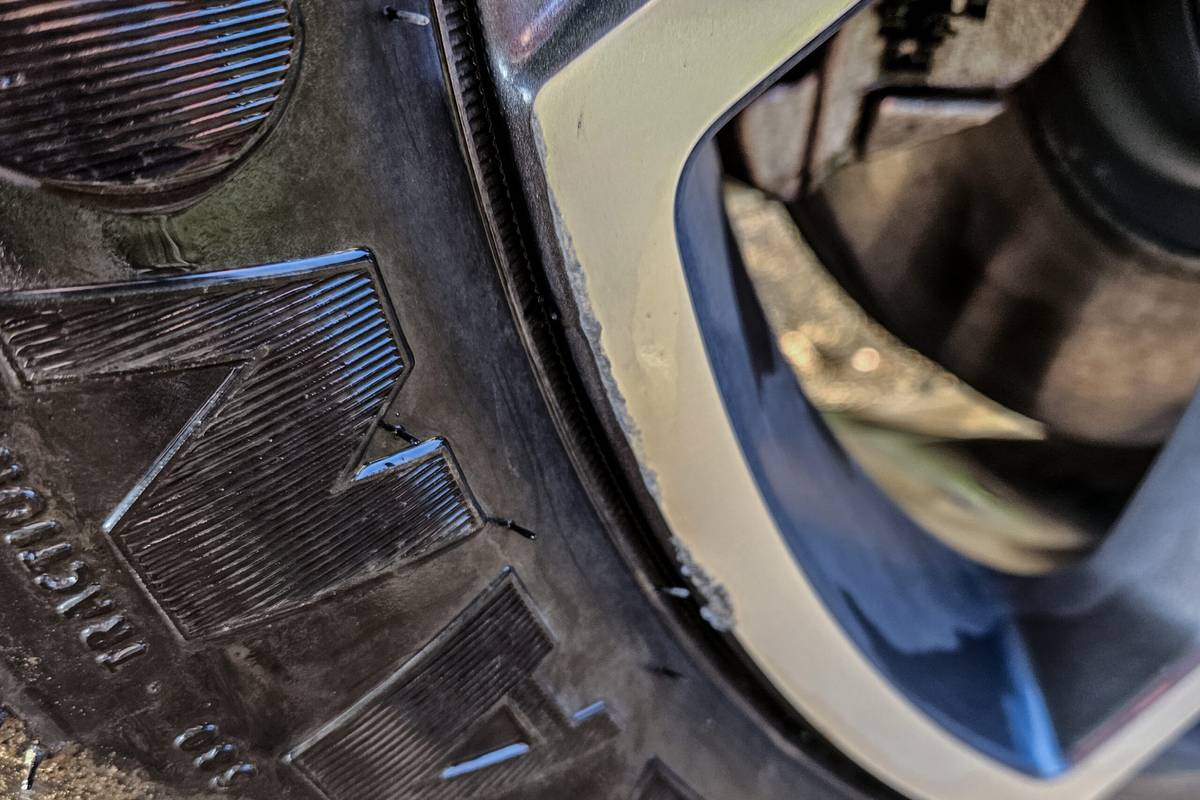
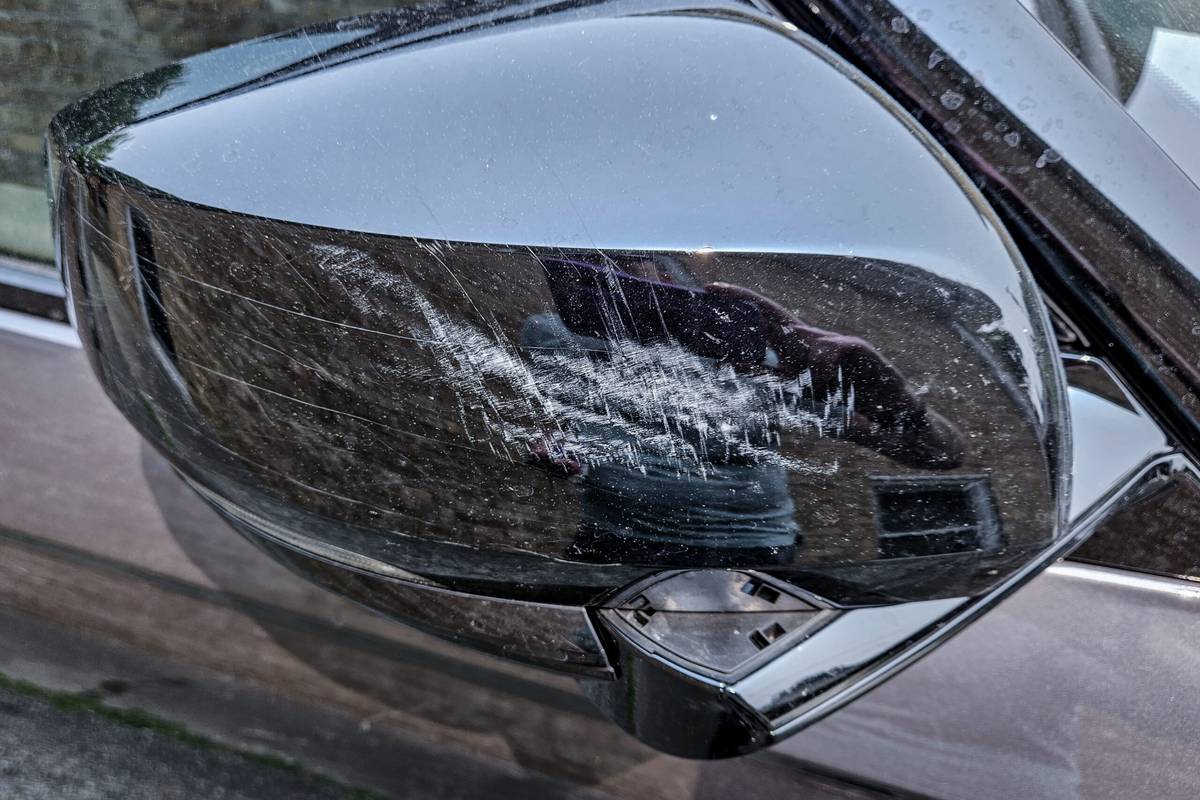

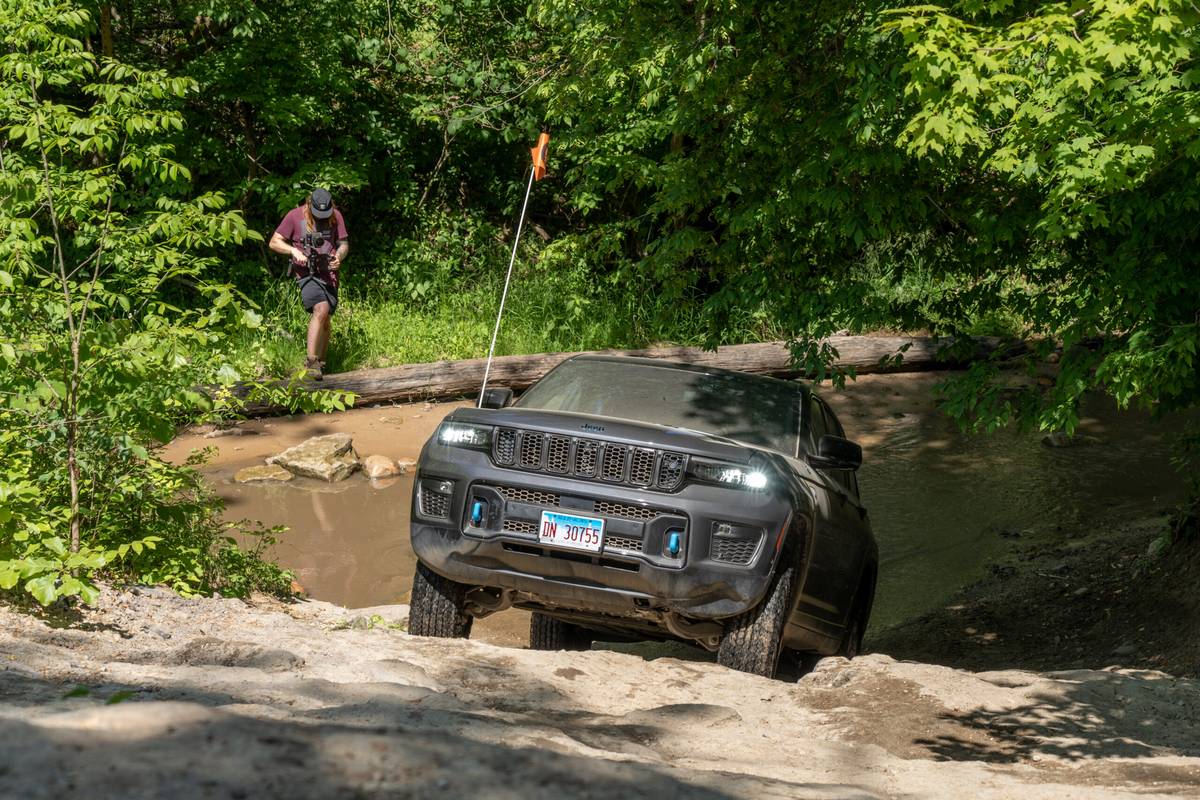
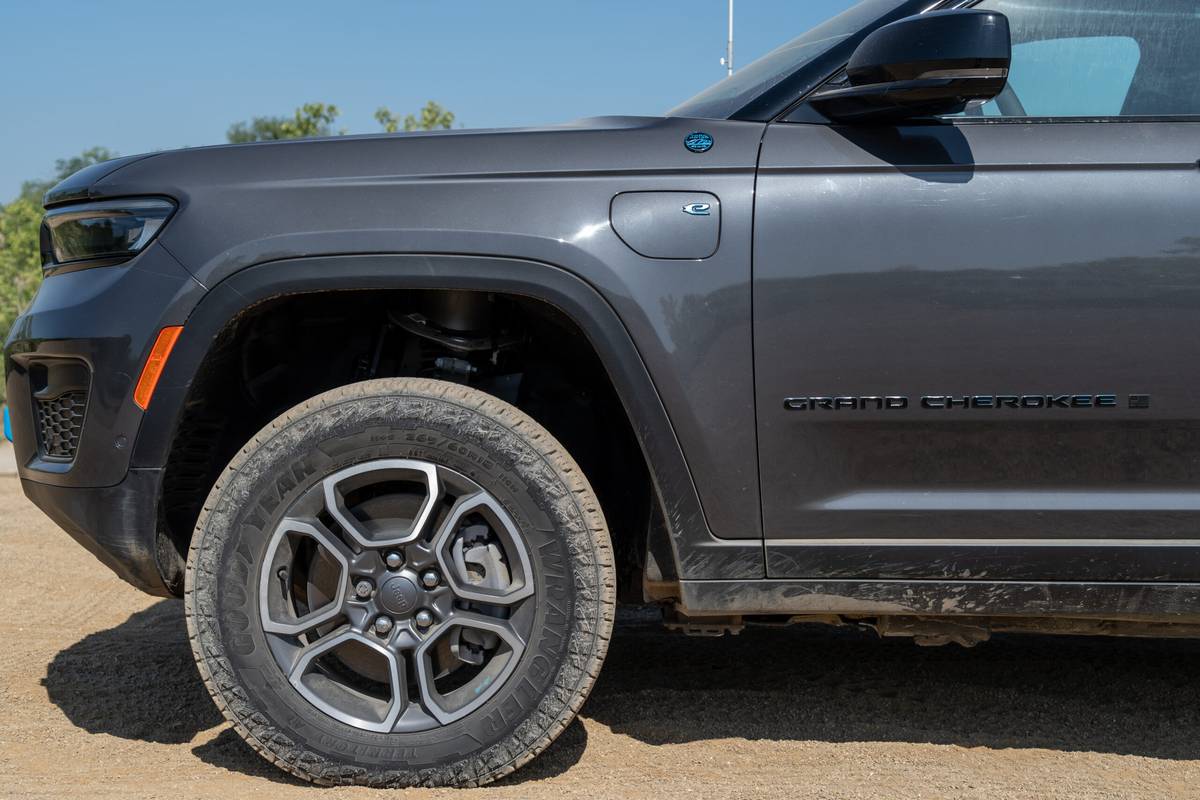
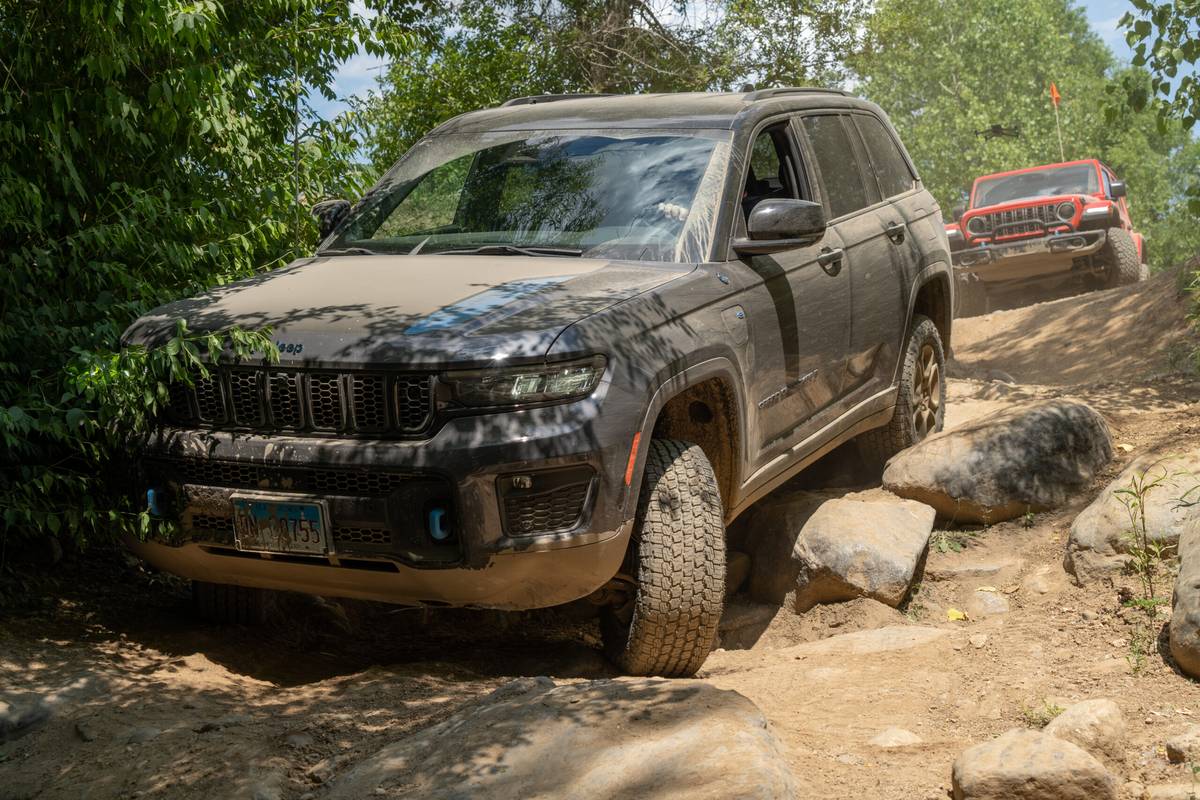
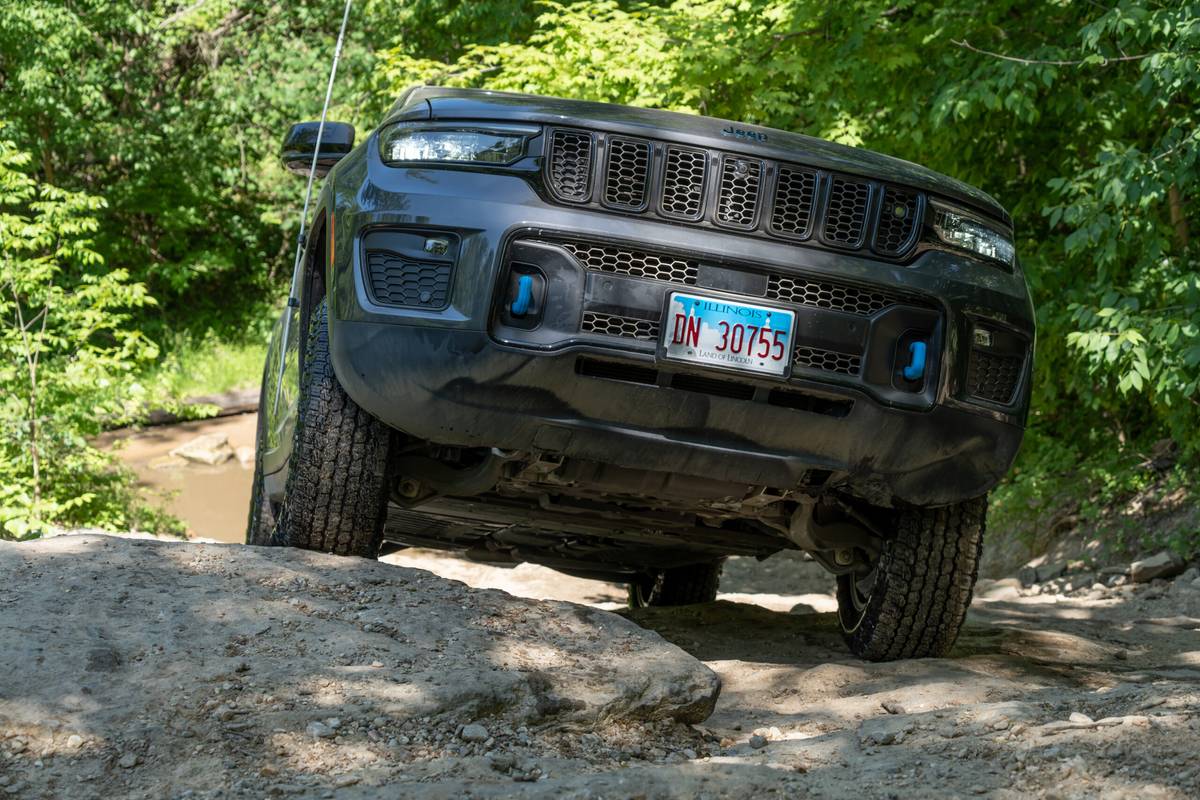
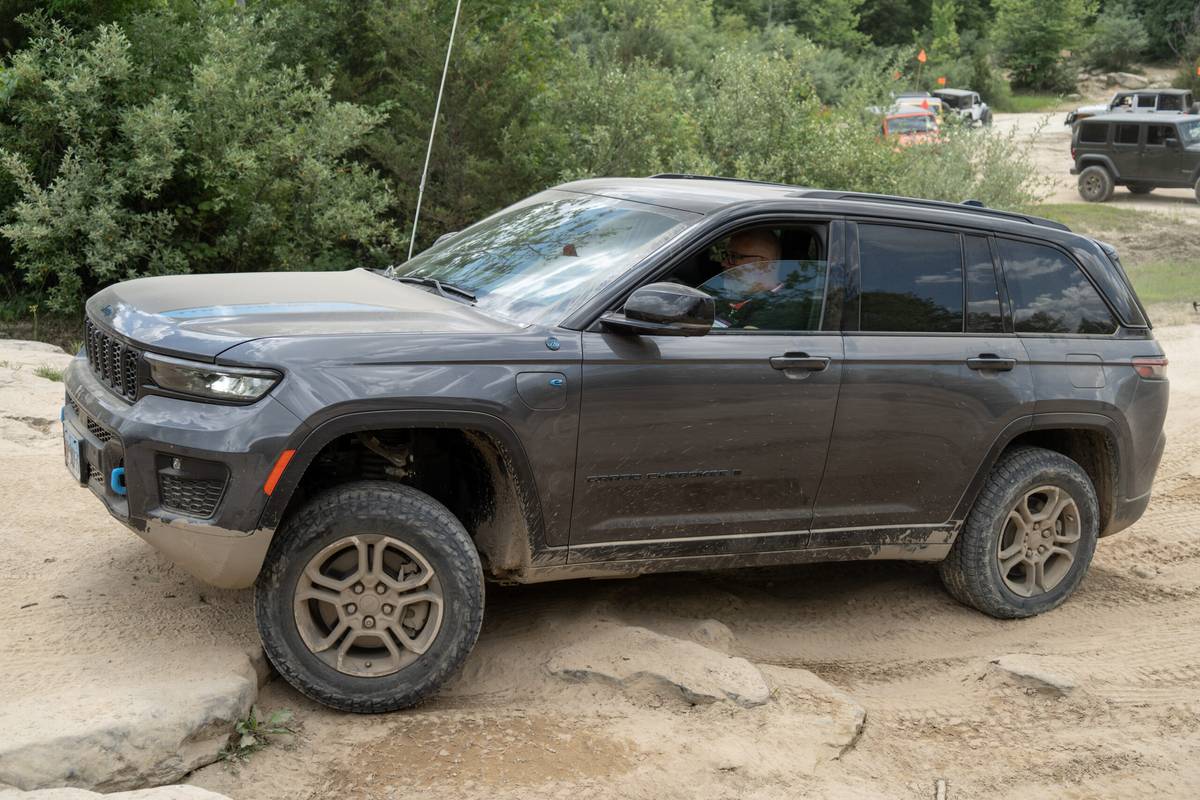
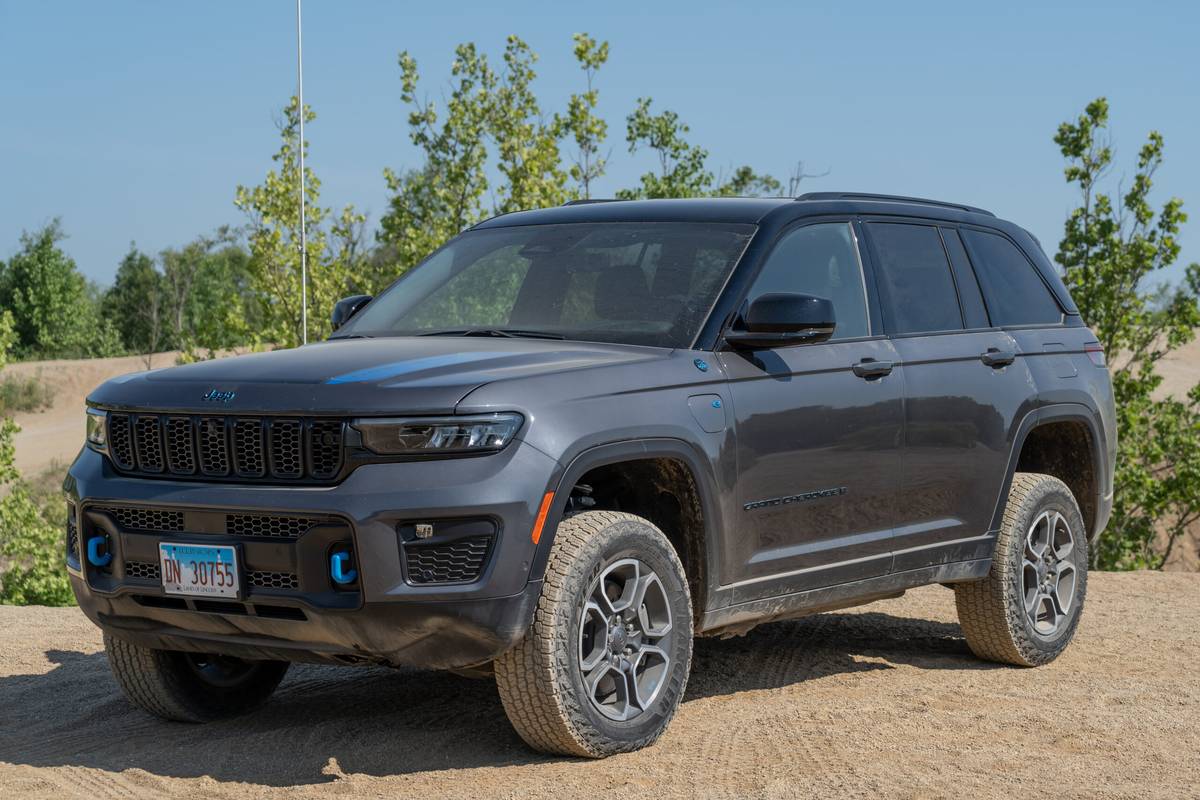


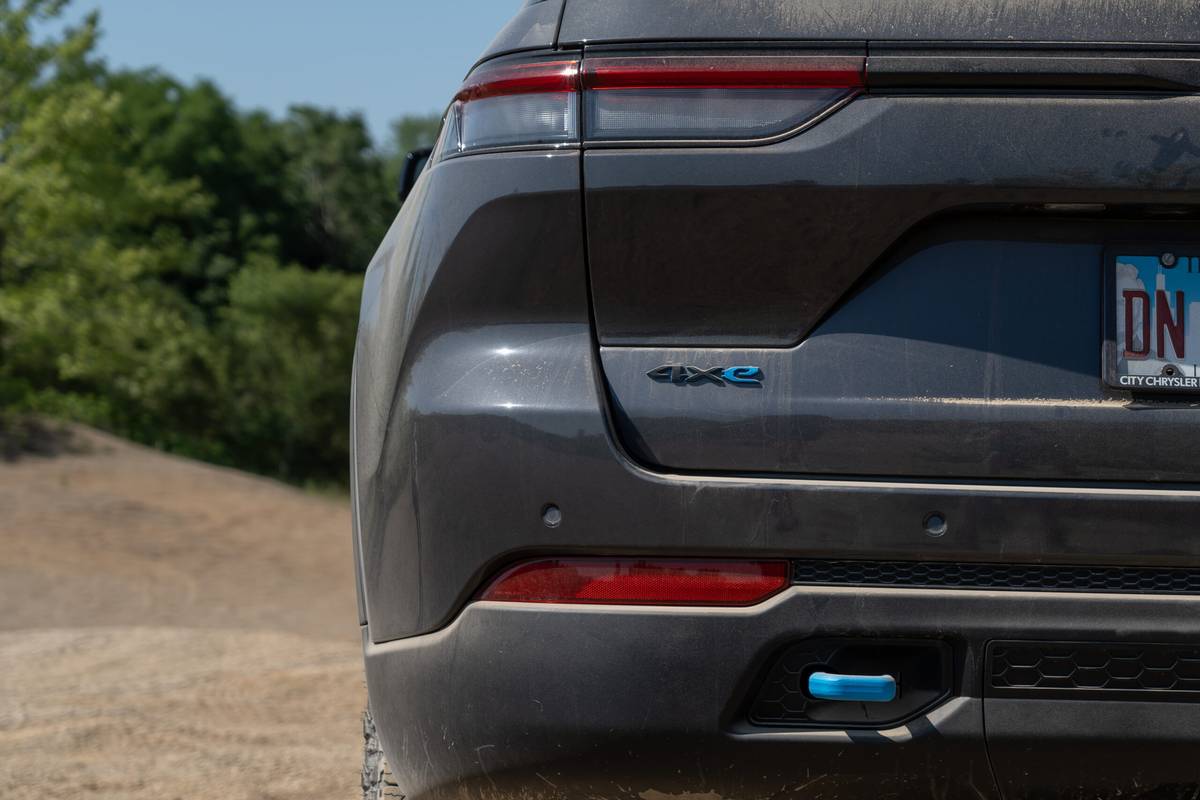
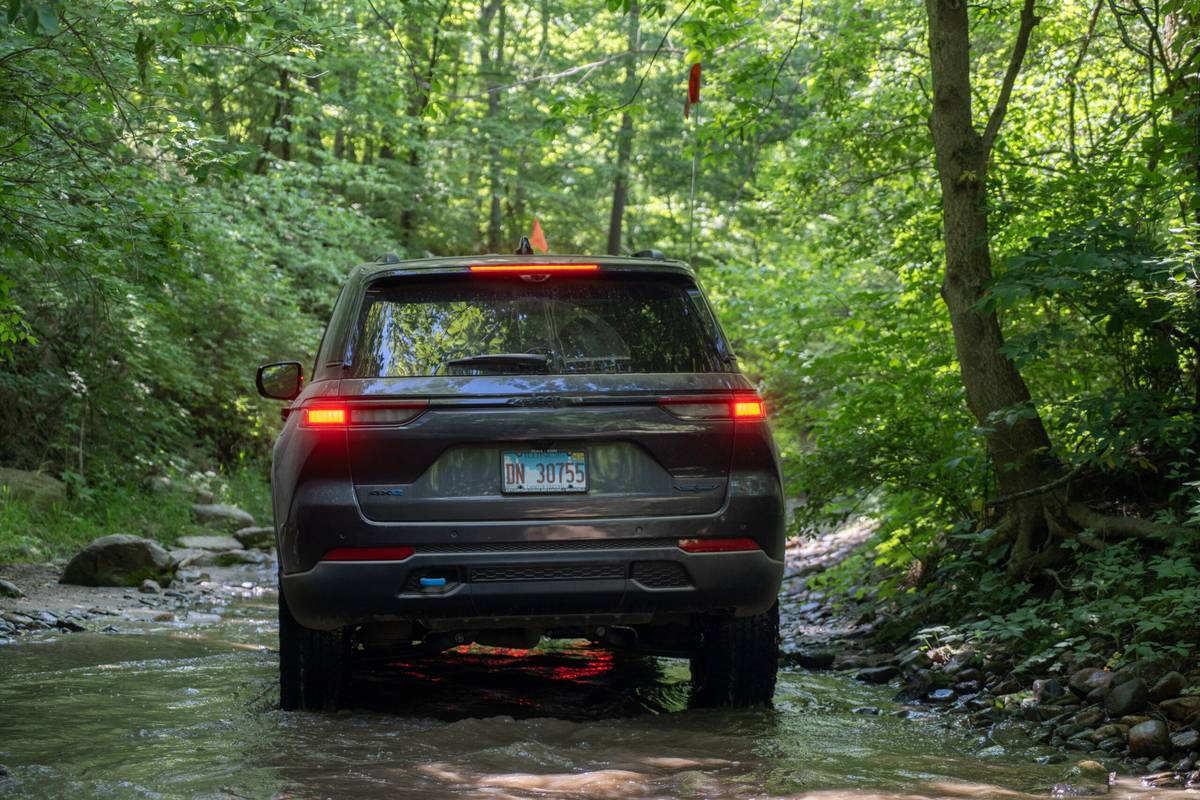
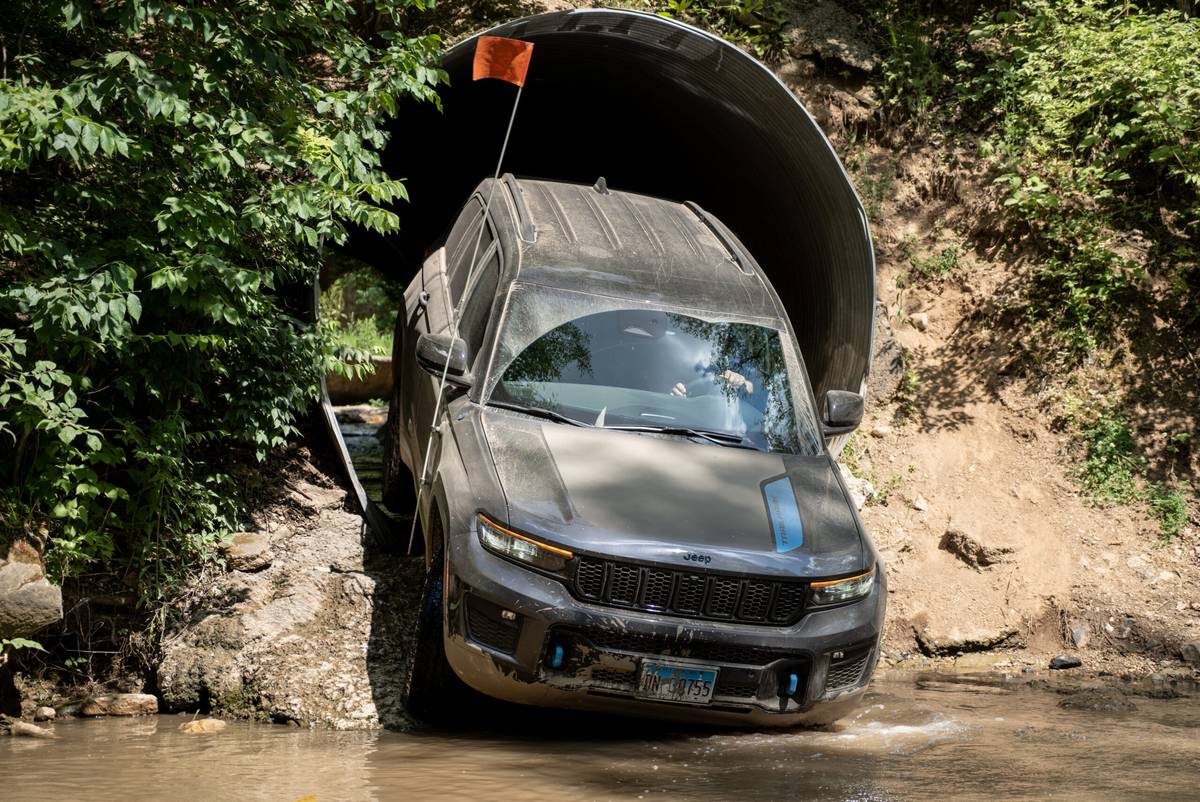
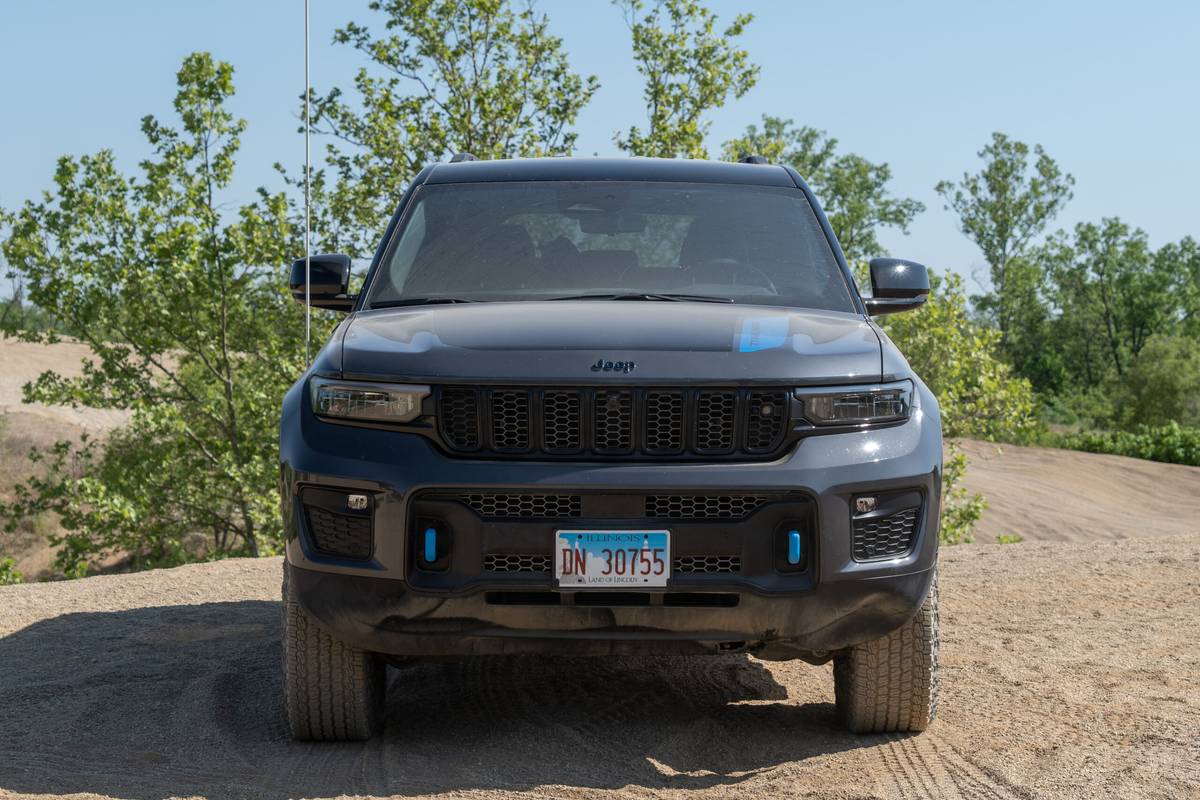
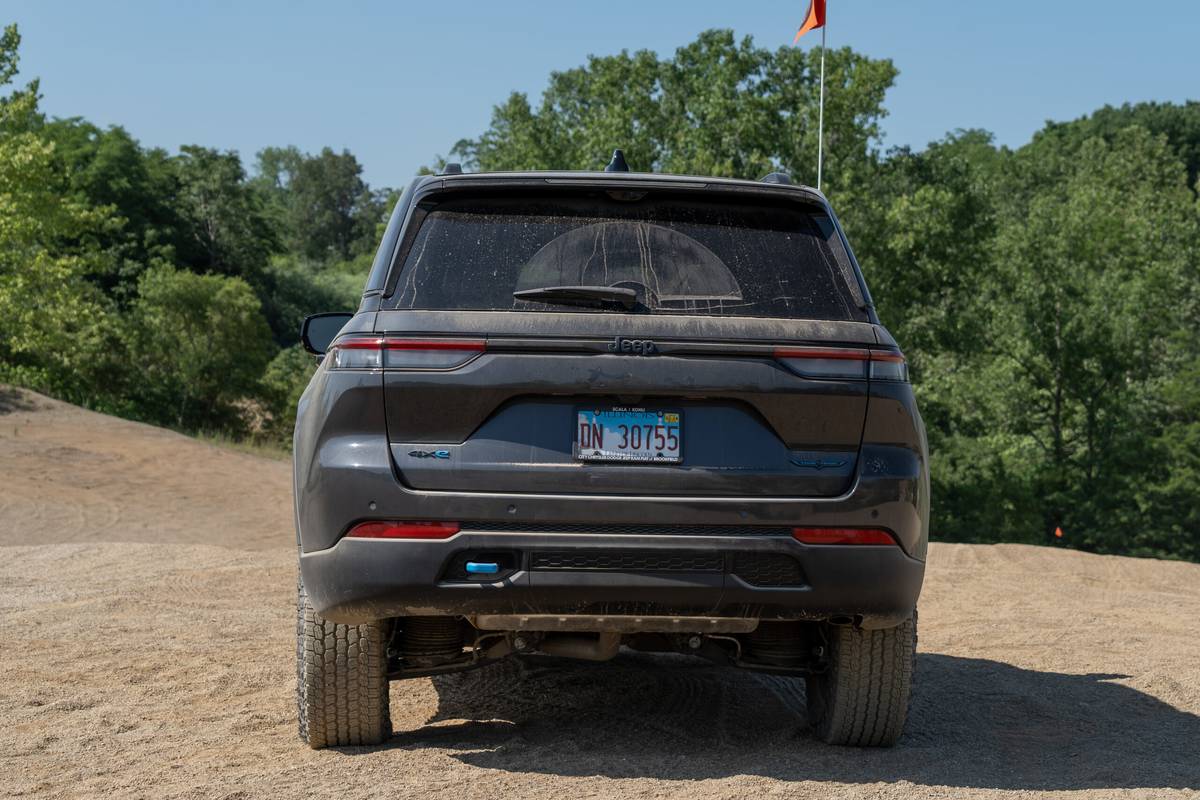
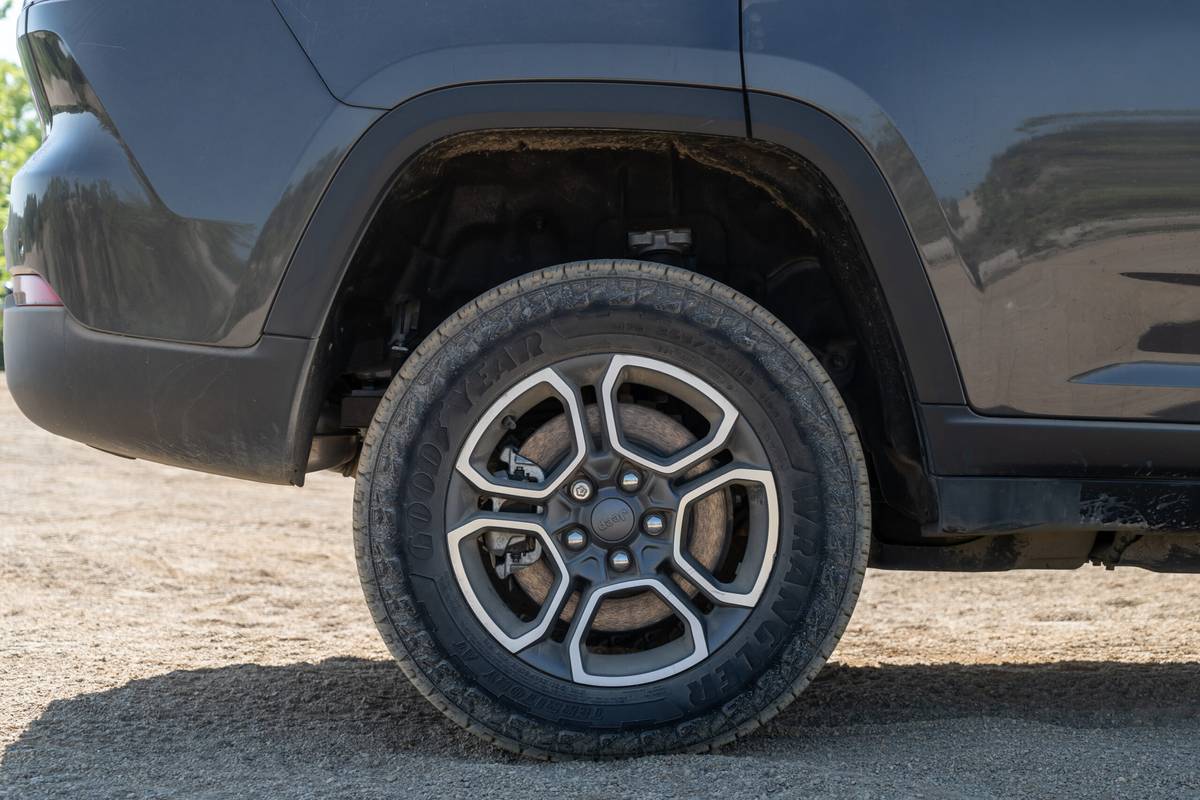

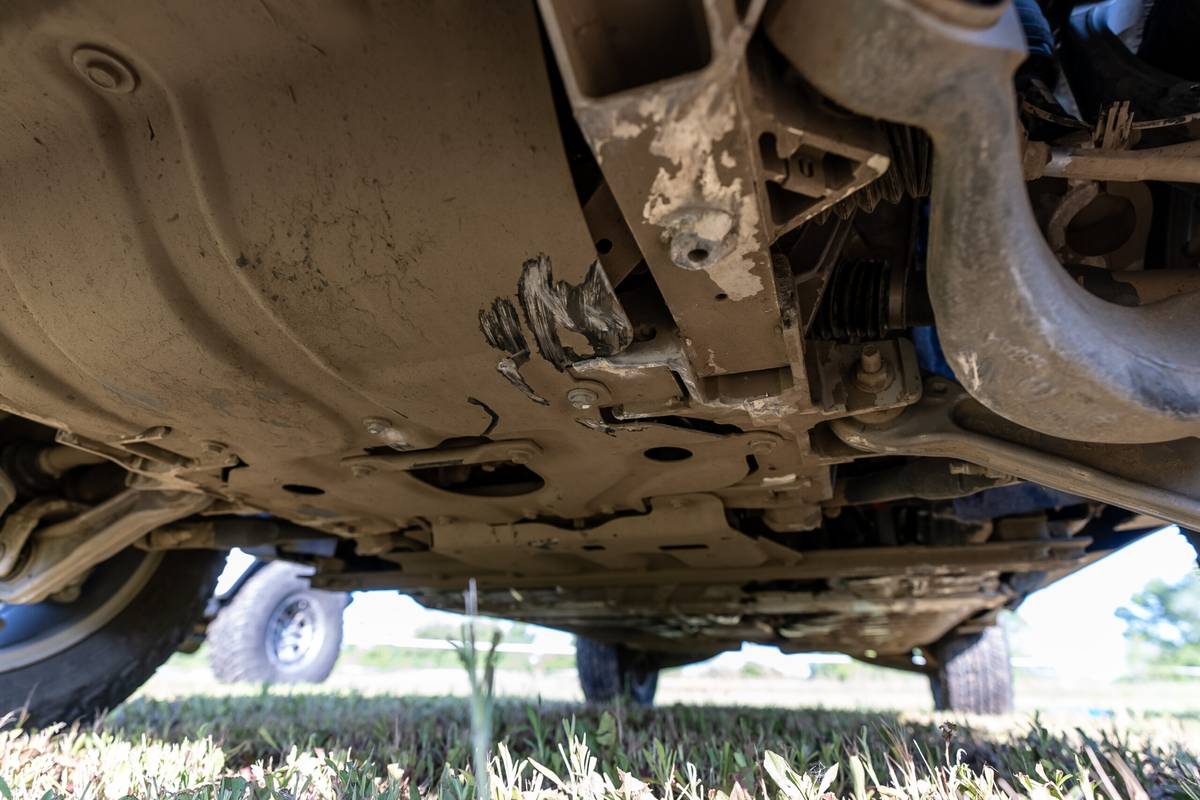
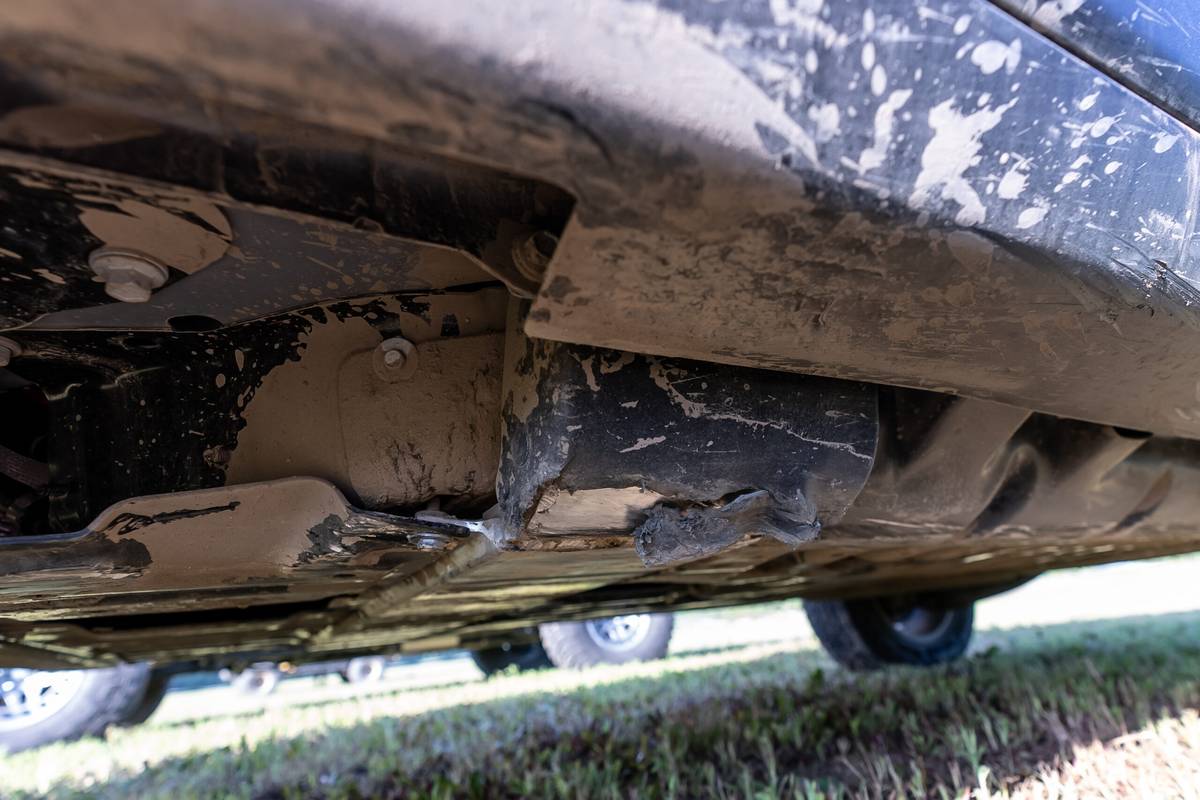
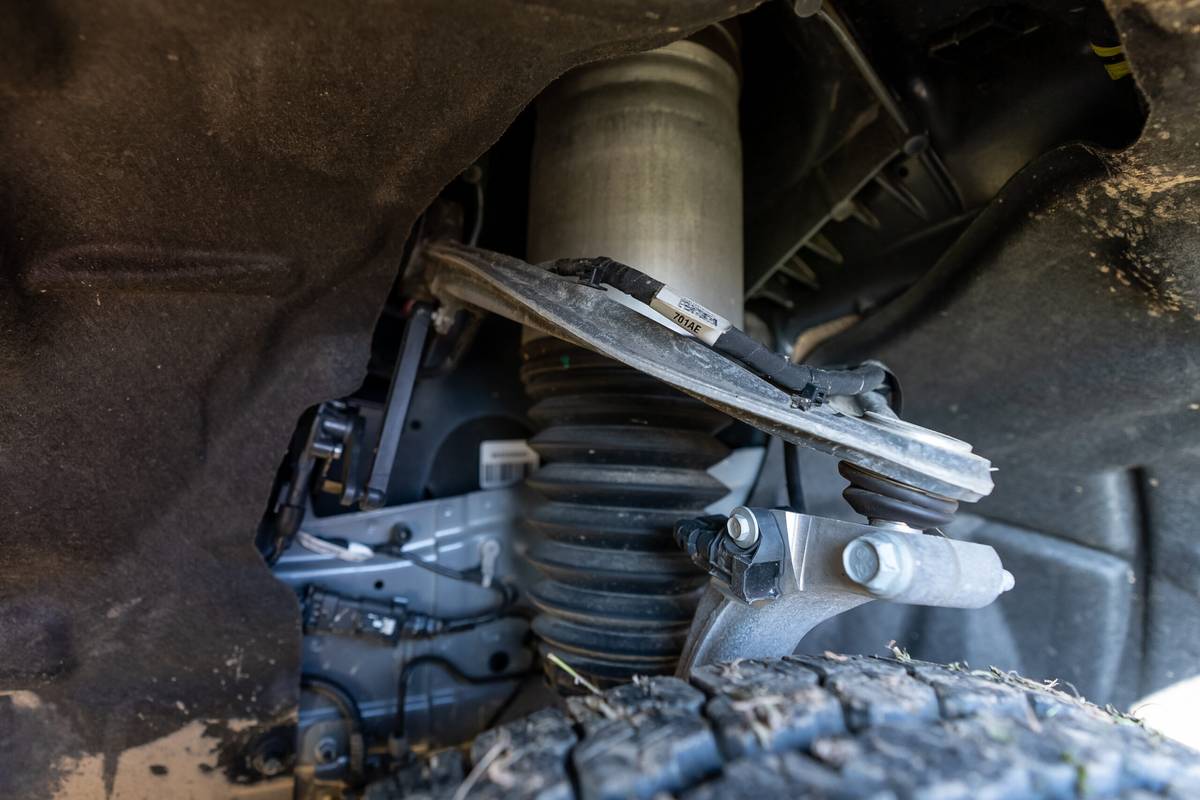
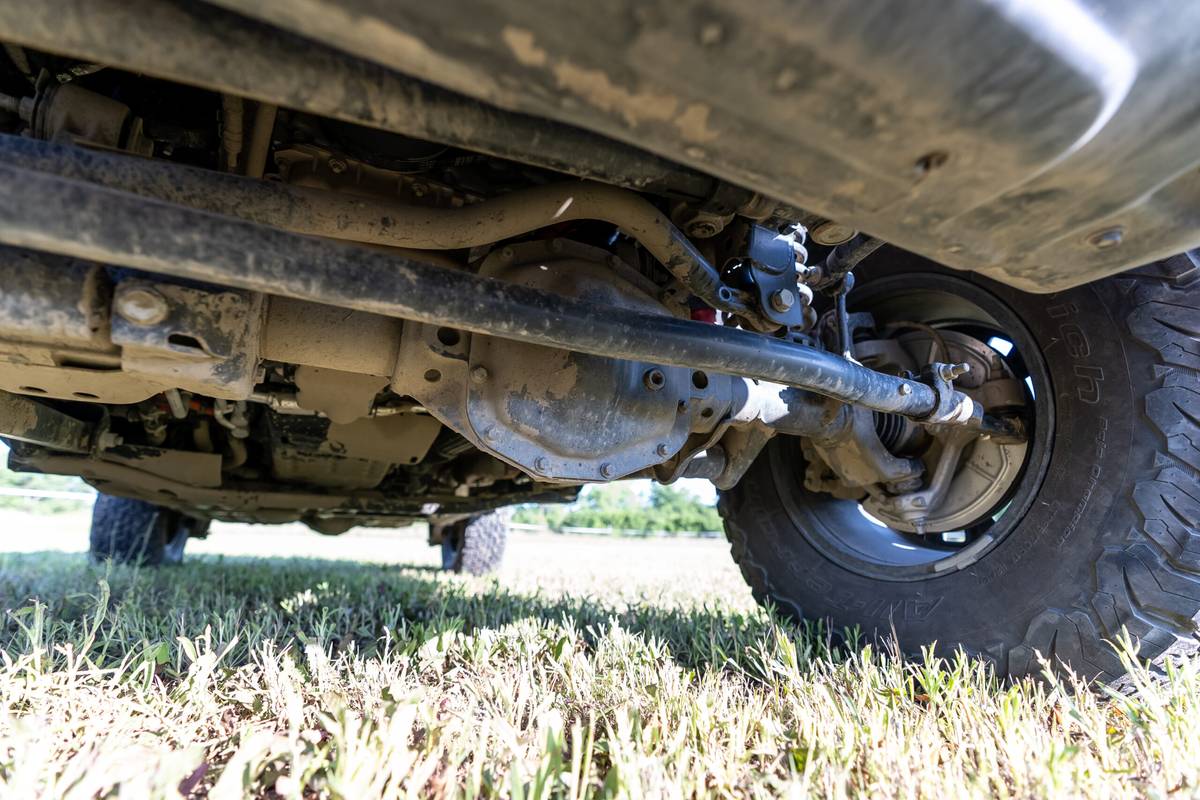
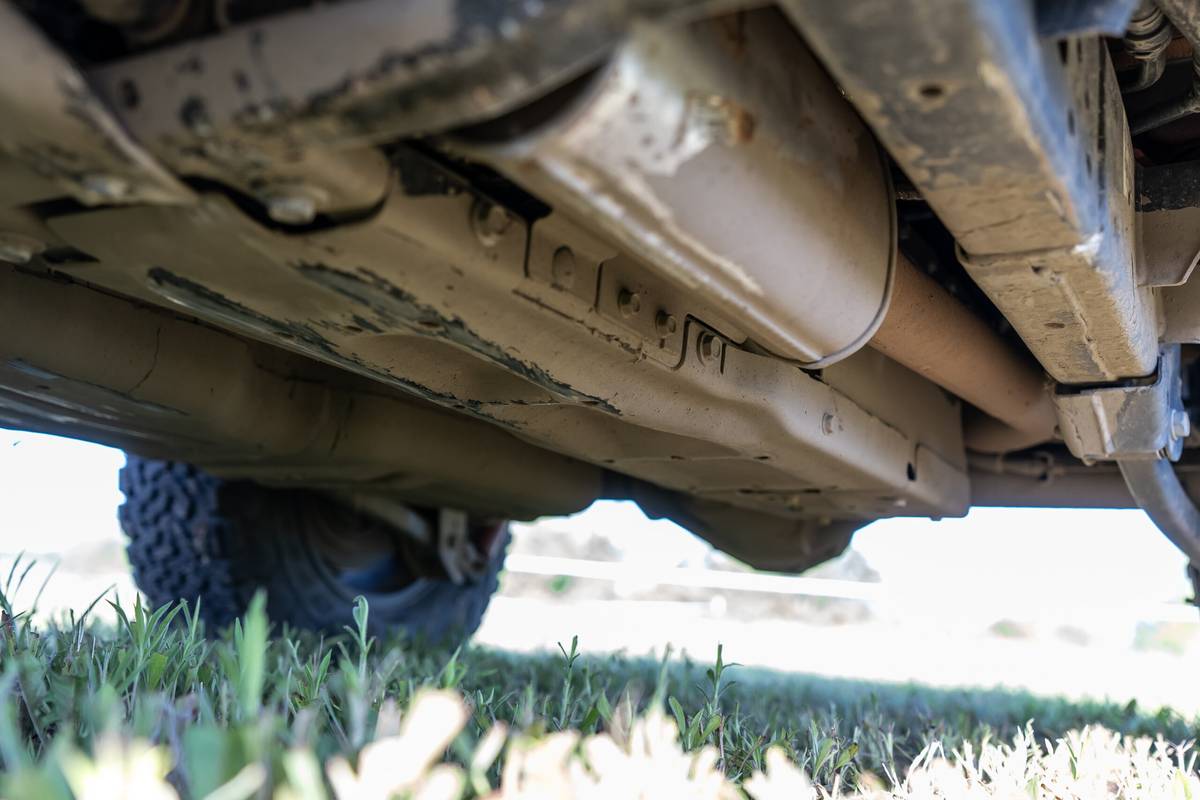
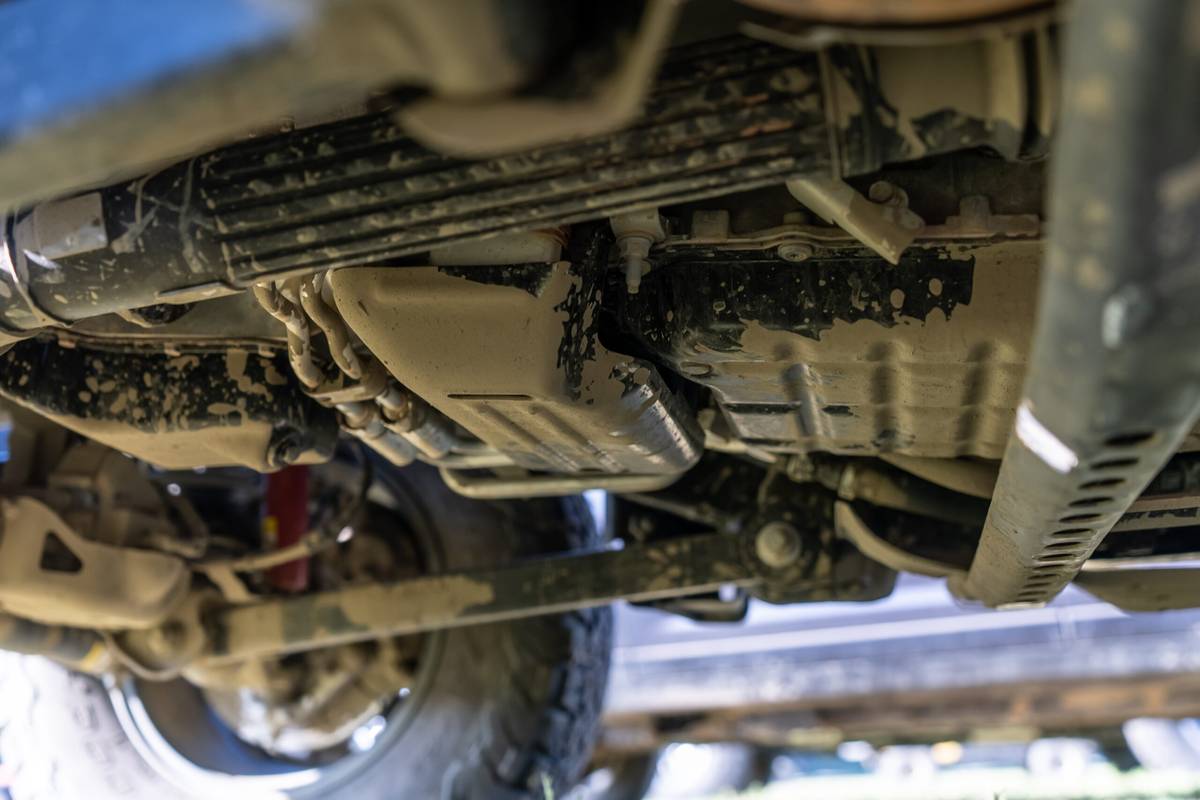
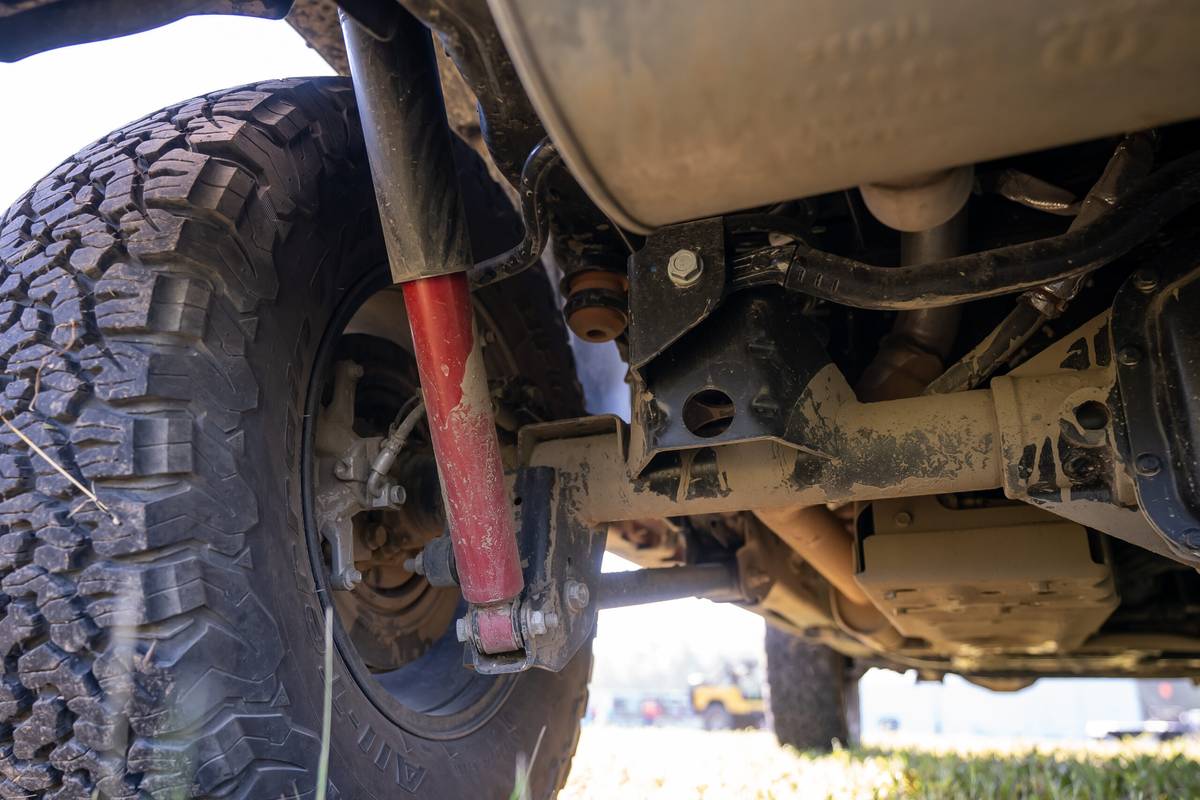
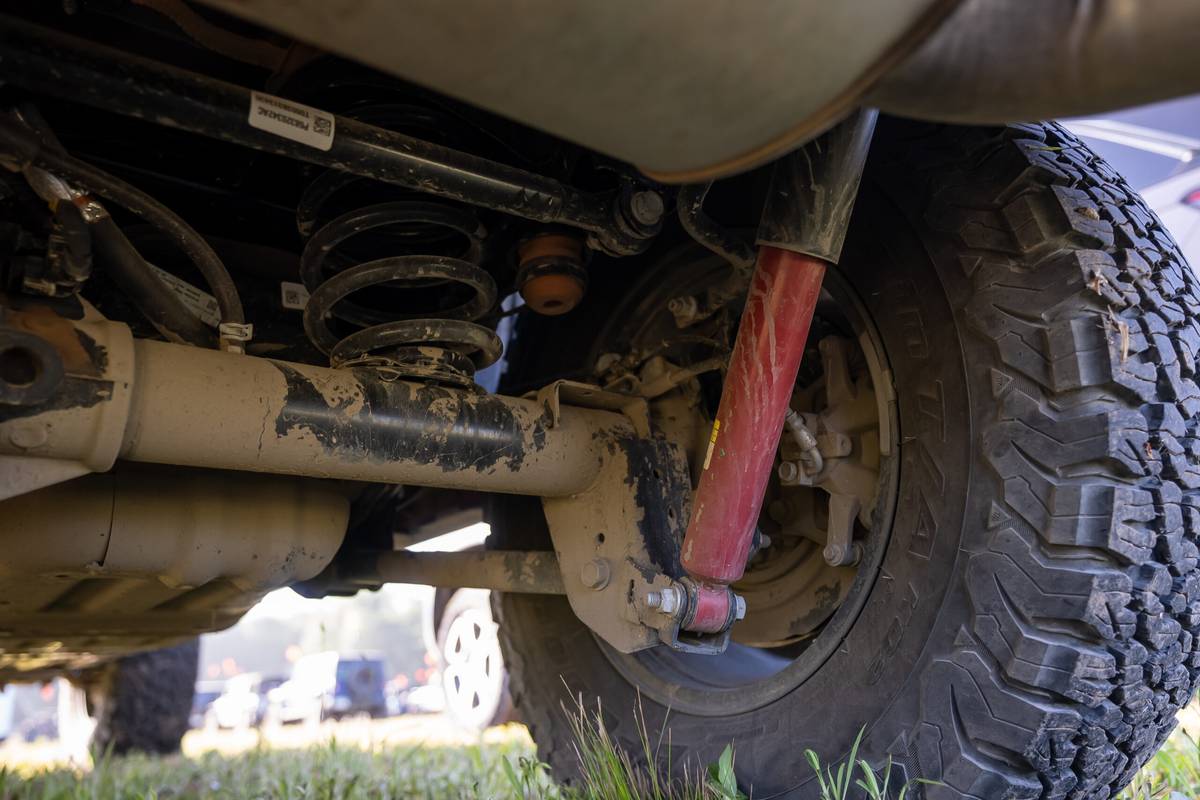

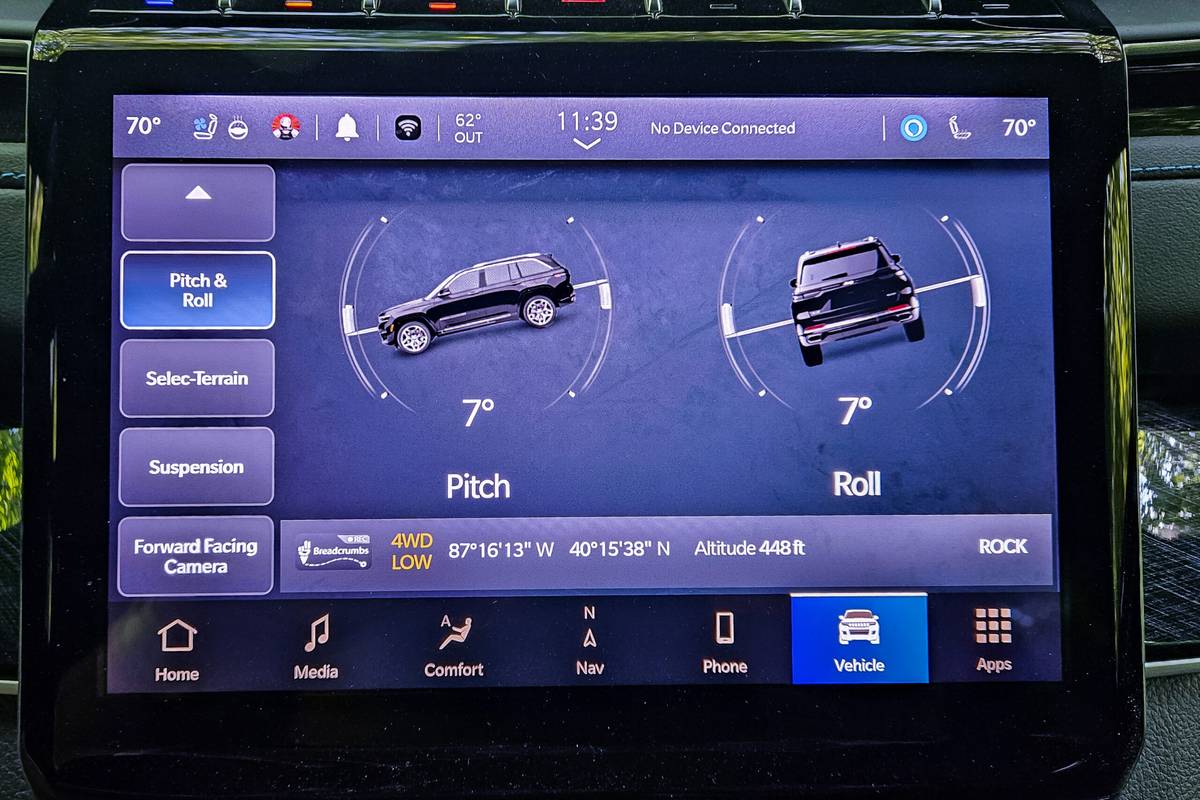
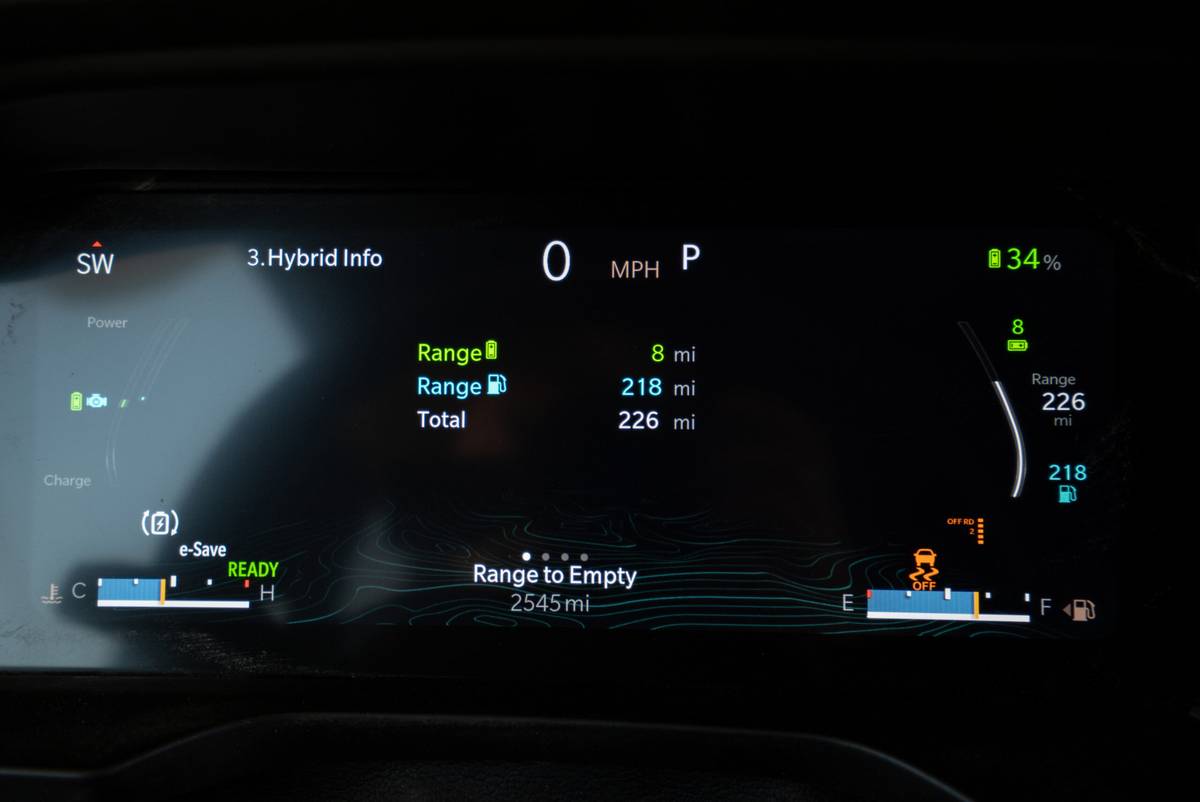
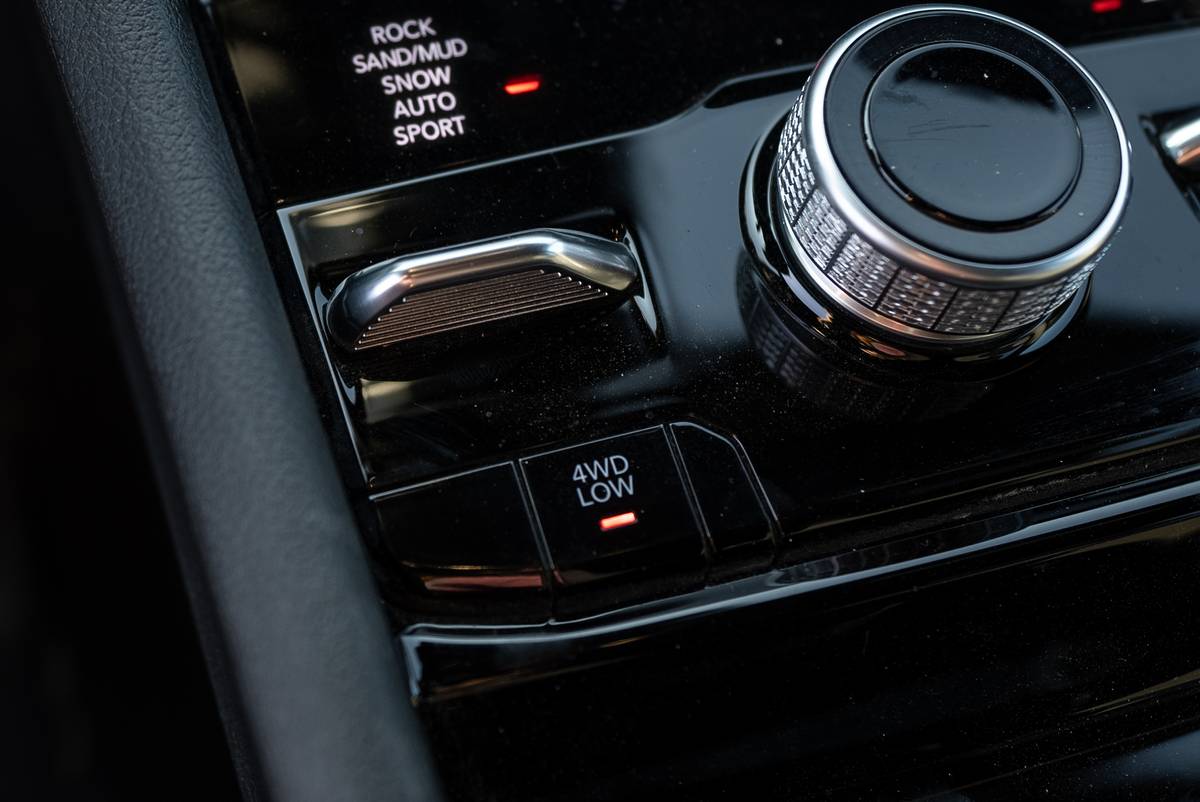
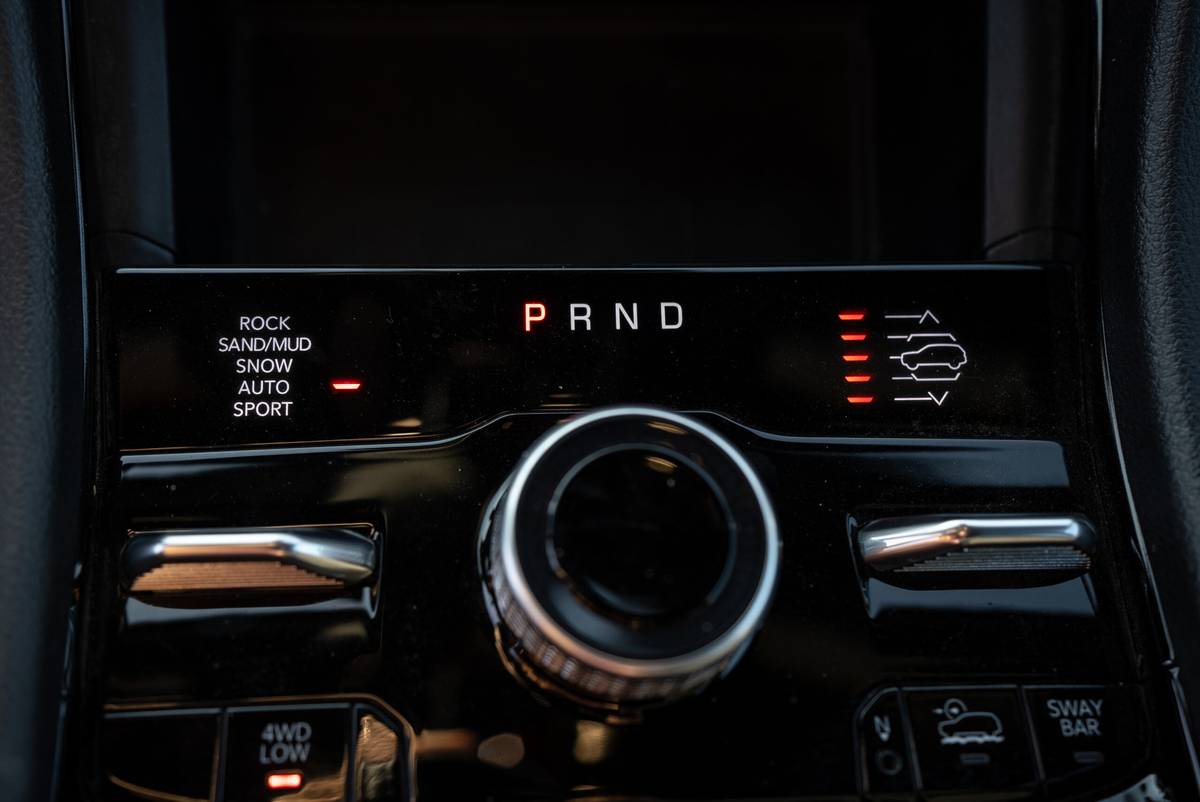
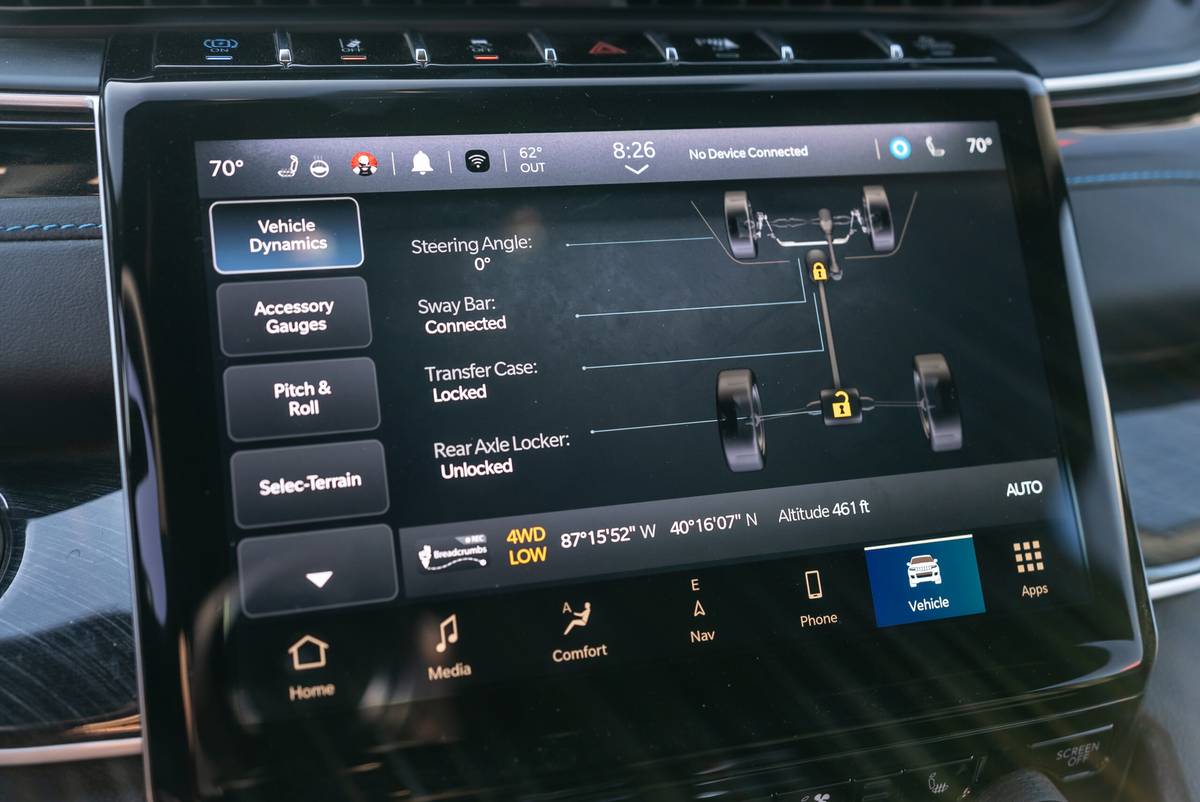
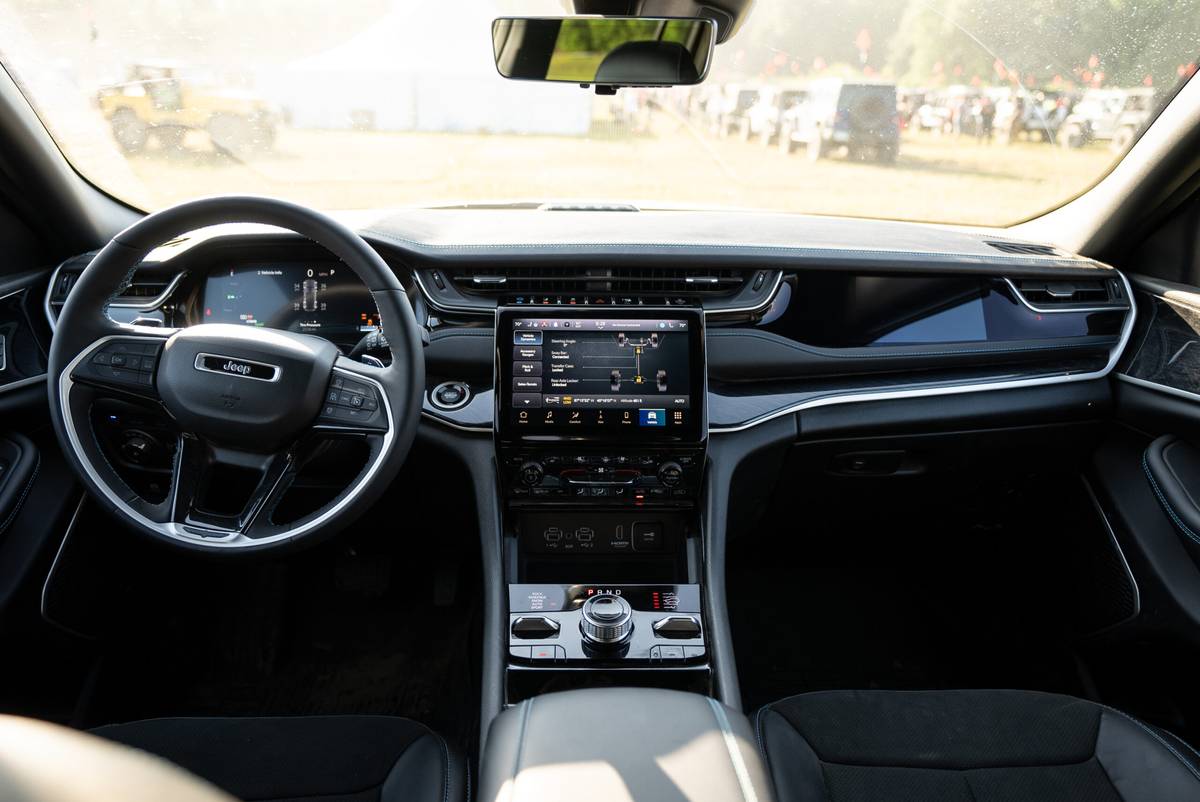



































Conclusion: Everyone’s a Winner Here
At the end of the day, these are both extremely capable vehicles off-road. Onlookers would stop what they were doing to watch the Grand Cherokee follow the Wrangler through 90% of the obstacles we threw at it, gawping at its ability to do things that seemed impossible for a family SUV. The fact that it could do those things, and do them while the driver and passenger inside luxuriated in cooled, air-conditioned comfort with ventilated seats, earned it more than a few jealous nods, too. For serious off-roading deep into the wilderness, the Wrangler is still the tops — but you have to know how to use it properly, something the Jeep Jamboree or the even more-useful-for-beginners Jeep Adventure Academy training school can teach you all about.
Our conclusion seven years ago still holds true today: The Wrangler is for off-roaders who know what they’re doing, while the Grand Cherokee is for people who want a comfortable everyday vehicle that they can sometimes take into the woods and do extraordinary things with. The fact that both are now electrified doesn’t really change that, but instead adds yet another dimension to their flexibility, utility and ability.
More From Cars.com:
- Ultimate Jeep Head-to-Head: Wrangler Rubicon Versus Grand Cherokee Trailhawk
- Jeep Grand Cherokee: Which Should You Buy, 2022 or 2023?
- Cars.com Best SUV of 2023: the 2023 Jeep Grand Cherokee
- Is the 2022 Jeep Grand Cherokee a Good SUV? 5 Pros and 4 Cons
- Jeep Wrangler: Which Should You Buy, 2022 or 2023?
Cars.com’s Editorial department is your source for automotive news and reviews. In line with Cars.com’s long-standing ethics policy, editors and reviewers don’t accept gifts or free trips from automakers. The Editorial department is independent of Cars.com’s advertising, sales and sponsored content departments.

Detroit Bureau Chief Aaron Bragman has had over 25 years of experience in the auto industry as a journalist, analyst, purchasing agent and program manager. Bragman grew up around his father’s classic Triumph sports cars (which were all sold and gone when he turned 16, much to his frustration) and comes from a Detroit family where cars put food on tables as much as smiles on faces. Today, he’s a member of the Automotive Press Association and the Midwest Automotive Media Association. His pronouns are he/him, but his adjectives are fat/sassy.
Featured stories





































